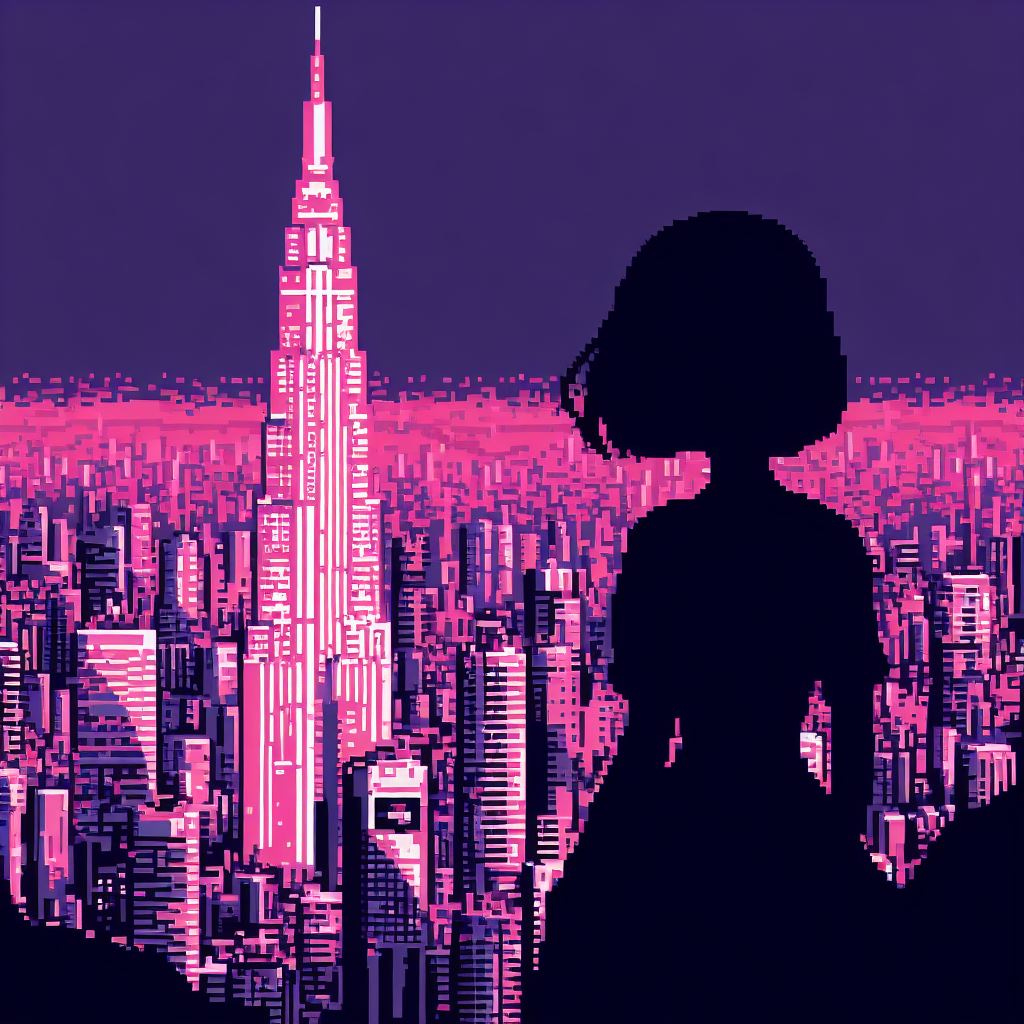
When we last left our tale, the year was 2004, and the Golden Age of the American Girls, as it could be called, was over. Like the end of most good things, though, it wouldn’t be readily apparent. The music was still playing. The drinks, still flowing, the merriment, still being made, dances still being had, and no one was quite ready to hang it up and call it a night. A plane doesn’t just fall out of the sky like a rock when the fuel runs out, nor does a car come to a sudden stop - they always coast for a bit. And, prior to Mattell’s acquisition of the brand in 1997, Pleasant Rowland - the founder of the company, had left plenty of gas in the tank for the crowned corporate heads of Mattell’s plastic empire to coast on.
So, let’s rewind a bit back to that sale in 1997, when the Pleasant Company switched hands.
To make one final note of Miss Rowland before she departs from the story, for her part, she took Steve Miller’s advice:
As of this writing, she’s still alive and kicking up in Madison, Wisconsin, where she uses her considerable wealth to patronize charitable causes and municipal projects both there and in Chicago. Apparently, she acquired the company MacKenzie-Childs after their 2001 bankruptcy and brought the company back to profitability, which tracks since, like I said previously, she looks like the distilled essence of grandma, and I’m pretty sure MacKenzie-Childs is a company that manufactures little ceramic tchotchkes, furniture, and home decor that grandmas love. The kind of stuff that fills up, like, half of your average Hobby Lobby. That’s what I call looking out for your own. As a brief aside, it also seems that most of MacKenzie-Childs’ output recently is almost exclusively black-and-white checker-patterned, which, if you know anything about Masonic symbology is… curious.
And, I’m not casting aspersions at Miss Rowland, especially because it seems that her involvement with the company has long since ended, but, c’mon - tell me that this doesn’t look like decor for the Black Lodge.1
Either way, in 1997, Miss Rowland’s part in the story effectively comes to an end. For her service, we salute her.
The thing is that, when a company comes into a good thing, and they can coast, they usually do. Despite immense corporate foolishness making headlines over the past few years by some very large companies, most businesses don’t purchase competitors or merge services to tank profits and lose credibility. The old adage, Don’t fuck with a good thing, really holds true. At the time, Mattell seemed to understand this, so, they were content to continue the line with the material that they acquired with the sale - material that had already been in development.
In fact, within a year of acquiring the brand, they opened the first brick-and-mortar store in Miss Rowland’s native Chicago. I suspect this was something that had already been in the works, given that it was a large operation that wasn’t exactly something that could be opened up overnight. Clearly, this business model has been successful, as there are twelve operating locations across the country to this day, with a thirteenth scheduled to open in Los Angeles and plans for international expansion, which… well, let’s just say I don’t think a Jordanian Girls or Russian Girls line would be opening a brick-and-mortar store in America.
I thought that the restaurant and salon features were additions made over time to make the destination more appealing to tourists as both shopping malls and physical retailers declined over the years, but, no - apparently, there was a restaurant included in the very first store. There was also a theater, though, given that American Girl feature films were still several years from materializing at the time, I’m not sure what they were showing. They even had a doll hospital at each location, since the life of being an eight year old's plaything can be one fraught with peril and harm. I'd like to know, though - how long does it take to get an M.D. in doll medicine? The restaurant is a real curiosity to me, too. Looks like they go out of their way to accommodate the dolls, so they can eat with the rest of the family, which, frankly, is funny as hell to me. Like, sure, yeah, your doll can sit at the table, but if I have to pay for a plate of plastic chicken tendies for Samantha, she can stay in the car.
Apparently, they do routine events based around the various girls, throwing birthday parties for the characters when their canonical birthday rolls around, or doing themed events. I also managed to find a menu to sate my curiosity about what was on it. The dinner fare was about standard for what you could expect, but I got a real kick out of the tea-time menu. Whoever came up with this - call me. We’ll work on it.

I know Josefina’s ass ain’t out in the desert of New Mexico in the 1800’s eatin’ no damn turkey sandwich2. What, you couldn’t do a quesadilla or something? A tamale, maybe? Is it considered racially insensitive to associate a character of Mexican descent wih Mexican cuisine, or something? I know I’m reading too much into this, but, c’mon, guys - aren’t we supposed to be celebrating the various cultures that make up the great ethnic patchwork quilt of America? Maybe I’m biased, but Mexican food is, like, one of the best contributions ever made to this country. The closest thing I’ve ever seen to world peace is when December rolls around and all the local old Hispanic ladies start peddling tamales in front of Home Depot.
Hell, you got Kirsten from Minnesota - give her the damn turkey sandwich, now that makes more sense. Or, better yet - where are Kirsten’s Swedish meatballs? That fruit is so low hanging it’s laying on the ground. Hell, meatballs too IKEA for you? Lingonberry jam on toast for the tea, then. Bam. Easy. Where’s Nellie’s Factory Lunch Gruel? Is Nellie too Irish to get on the menu? Is this some sort of stab about the famine? Unbelievable…
Speaking of Nellie, I also noticed Samantha didn’t get on here, despite being one of the OG’s. She’s from 1904, right? Well, 1904 was the year staples of American cuisine were introduced at the Louisiana Purchase Exposition in Saint Louis3. Hot dogs, hamburgers, ice cream, cotton candy, it was literally the fucking banner year for what we know as fundamentally American food. Where’s Samantha’s damn cheeseburger? And, for that matter, why did Samantha not have a book where she went to one of the world fairs? Huh? C’mon, Miss Rowland, don’t you want to educate the youth about the world fairs? Don’t the people deserve to know what happened there? Oh, that’s right - there already was a girl that went to one of the world fairs in Saint Louis. A little girl of… Tartarian extraction, perhaps?
But y’all still ain’t ready for that discussion.
How much input Miss Rowland directly had into the development of these post-acquisition characters and their stories, I can’t say, nor can I find, but whether she was dictating anything personally or not is irrelevant, as, often times, a guiding vision or a set of principles adhered to by a leader are enough to keep a company steady and moving in a certain direction, whether or not said leader is down in the trenches making all the nitty-gritty decisions themselves.
After all, as I noted before, once Mattell acquired the line, the time between the releases of new character drastically shortened, with Felicity Merriman being released a whole five years after the original three dolls, to only a scant two between the final of the “originals” Kit and Kaya, which I believe can be traced to Miss Rowland’s original idea of keeping the books as historically accurate, as well as both informative and entertaining; both of which require time and money, which is a combination that larger companies like Mattell are usually averse to.
This brings us up to 2004.
God loves a trier. And so do I. Nellie O’Malley - Samantha’s best friend and eventual legally adopted sister - would be the first of the Best Friends line. Always the bridesmaid, never the bride… until now. And, hey - good for her. Who doesn’t love a good rags to riches story? A poor little immigrant girl from Ireland gets adopted by a well-to-do American family, learns to read, and goes on to get a proper education; America was built on stories like that.
She’s also really easy to make fun of, for obvious reasons, and, just to clear the air on that, all these jests and jibes - they come from a place of fondness and affection. The stories surrounding these dolls are sweet, simple, and wholesome, and, if I sound like I’m giving them a lot of grief, believe me when I say it’s all in good fun, and I really have nothing but respect for Pleasant Rowland and the house she built. In my opinion, more sweet, simple, wholesome stories are what kids need more of these days.
I digress. In 2004, Nellie would make her debut with a single companion book, a handful of accessories, one nice, new pretty dress to replace her ratty old potato sack and signify her ascension to the next rung on the socio-economic ladder. I can only imagine her, sitting at the dinner table with Samantha, dining on hot dogs and hamburgers and all the other delicious Tartarian delicacies brought to America in 1904, smiling as she finally discovered the sensation of what it felt to be satisfied by a meal and, quite possibly, taste meat for the first time after a grueling eight years of hard factory labor, consuming nothing but thin, watery cabbage soup, and saying:
They say, every story has a happy ending if you stop it at the right place. In a just world, Nellie’s Cinderella story would have ended there. I’d tell you that Nellie went on to join the pantheon of what are known as the historical dolls as a beloved and respected character alongside her best friend and sister, Samantha, and would be showered with additional gifts and fine clothes to accompany new and endearing tales documenting her adventures. We’d close the story book here and leave dear Nellie to continue her story, as all fairy tale princesses do, in perpetuity, riding off into the sunset for that happily ever after, while we, my sweet reader, would go on to speak of other matters. Perhaps something about the current unrest in the Middle East? Another deep-dive into a popular children’s toy? I hear articles dissecting the skibidi toilet phenomenon with children are doing quite well, but when I hear skibidi toilet rizzler gyatt MrBeast smurfcat tiktok, I feel myself get physically nauseous, so, in a way, perhaps I should be soemwhat grateful that Nellie’s story has yet to conclude - and not to her benefit.
No. Only one short year later, Nellie’s arrival would be one-upped and the spotlight stolen by the release of the second best friend - Elizabeth Cole, a Colonial contemporary of Felicity Merriman.
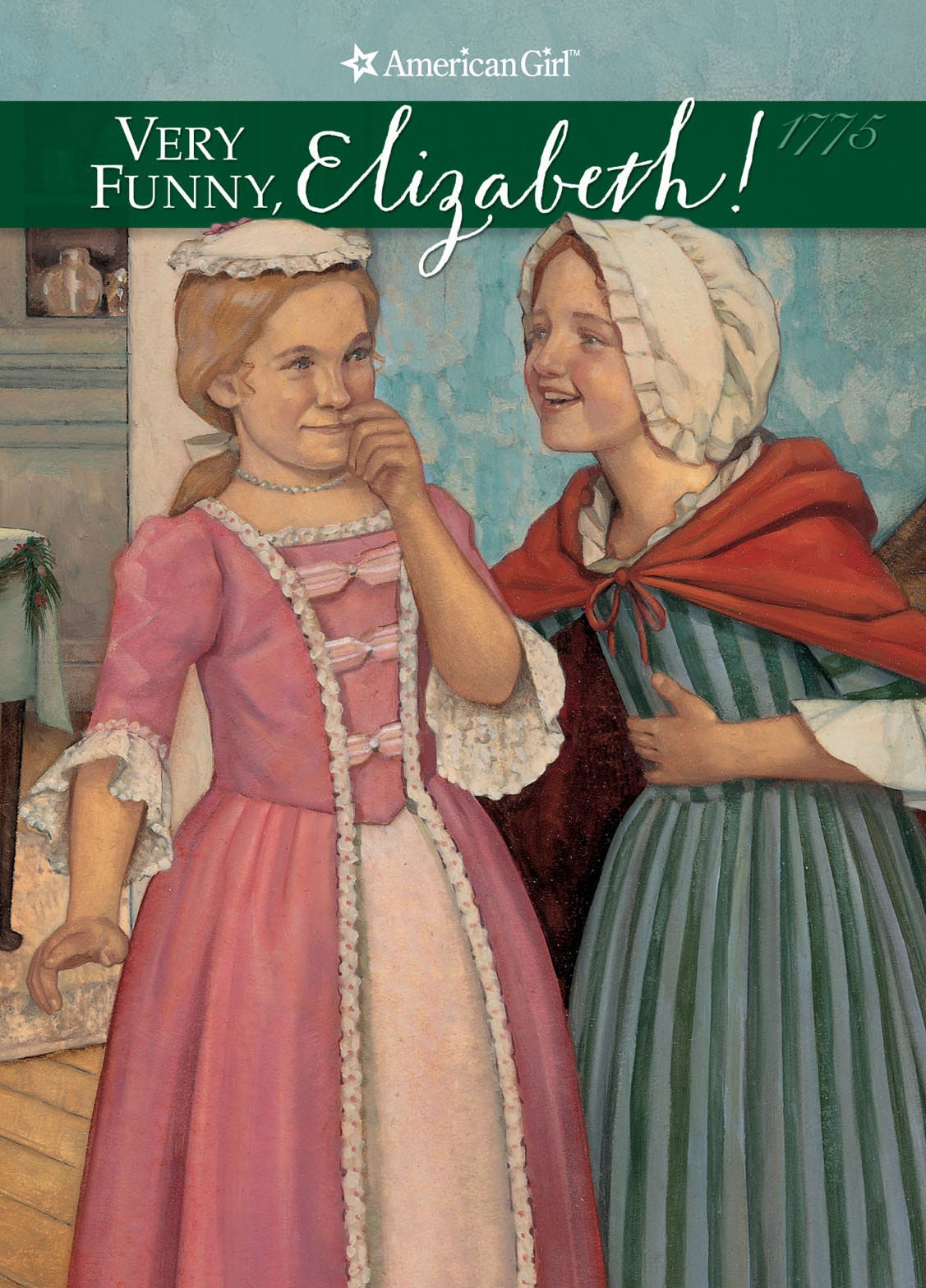
No, Elizabeth - I find nothing amusing about this turn of events, actually. In fact, I find there to be some sort of cruel, poetic irony about it; a girl of English stock, stealing the limelight of a poor Irish girl… Perfidious Albion strikes once again.
Well, Elizabeth would soon find herself on the receiving end of this cruel joke when she, herself, was co-opted when it came turn for Molly’s best friend, Emily Bennet, to get in on the action as the third best friend. And, within a year, Emily would be shown the door to make room for Kit’s best friend, Ruthie Smithens.
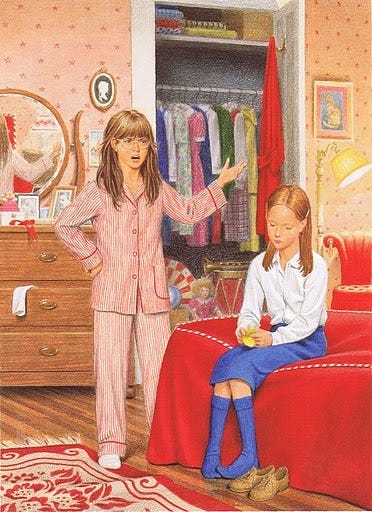
Now, what is it that separates a best friend from a main-line historical doll? Well, it seems that the historical characters were all released or developed during Pleasant Rowland’s tenure with the Pleasant Company. The best friends were pre-existing characters from those stories that kind of came… pre-packaged, if you will. Already there and ready to go. Kind of like a microwaveable dinner.
Now, think about this - instead of making new girls for new, unexplored eras of American history, Mattell just took pre-established characters and made dolls of them. Which takes significantly less effort than doing the research and leg-work to develop a new setting, new characters, and new stories.
You see where I’m going with this, right?
But, it’s not just a matter of money or effort - I think the argument could be made that the best friends were just quick, easy ways to pad the line between the release of the last historical girl that Mattell inherited to their first original, because if there’s one thing that we can’t have, it’s breaks between content. New material must always be dropping. A brand cannot stagnate. But… well, we’ll come back to this. Believe you me.
This isn’t to say that the best friends were poorly recieved or even considered lesser by the fans, but there is a feeling that these girls are just another, more expensive accessory to the core characters.
Well, Mattell would release the first historical character of their era of stewardship over the line in 2007 with Julie Albright. It seems fitting, in a way, that her time period was that of the 70’s, centered around the dark, festering heart of the drug-fueled orgy of senseless depravity that was the counter-culture of the time, San Francisco.
Given the time and place, it makes sense that Julie’s stories would heavily focus on themes of feminism, politics, environmentalism. Even her parents are freshly divorced, which is a phenomenon that really kicked into high gear at the time. These are themes that are basically inextricable from that period.
Now, most of us can agree that the nostalgia for the bay area in the 70's is just boomers ill-placed, wistful pining for what might have been their generation’s high-water mark, and that anyone with any sense can admit that, despite being responsible for some great music, was still a degenerate cesspit of drug abuse, sexual impropriety, and just plain hedonism that spawned political movements and tectonic shifts in the culture which would largely set the stage for many of the issues we see today. This is to say nothing about the occult undertones and pushing-and-pulling of various shady intelligence agencies amongst the movers and shakers that, really, make the whole scene look like a controlled demolition of traditional American society in hindsight. This is, after all, the flashpoint at which the boomers decided that this was so dreadfully awful that they were going to do everything they could to make sure it was unavailable and inaccessible to their descendants.
One of the biggest sticking points of Julie’s tenure as the it-girl of the line was the topic of racism and prejudice. This was, of course, not new territory. Racism was also pertinent to Samantha’s stories, given Nellie’s filthy Hibernian blood distinguished Irish heritage and the vicious anti-Irish sentiment that was so pervasive of the time, but that was that kind of old-fashioned European racism where white people were racist against other white people that, to most modern Americans, seems antiquated and absurd, like penny-farthings or monocles and saying poppycock.
Oh, and, uh - wasn’t there another girl who had to deal with issues of race? Where racism was kind of important to her story?
Hm. I’m sure it’ll come back to me.
Anyways, Julie’s best friend was Ivy Ling.
And, maybe I’m drastically veering out of my lane, here, but… I dunno, man. Look, I wasn't there, obviously, but if you wanted to make a statement on Anti-Asian prejudice, I think there might have been a big difference between prejudice towards Asians in San Francisco in the 1970’s and prejudice towards Asians in San Francisco in the other 70’s…
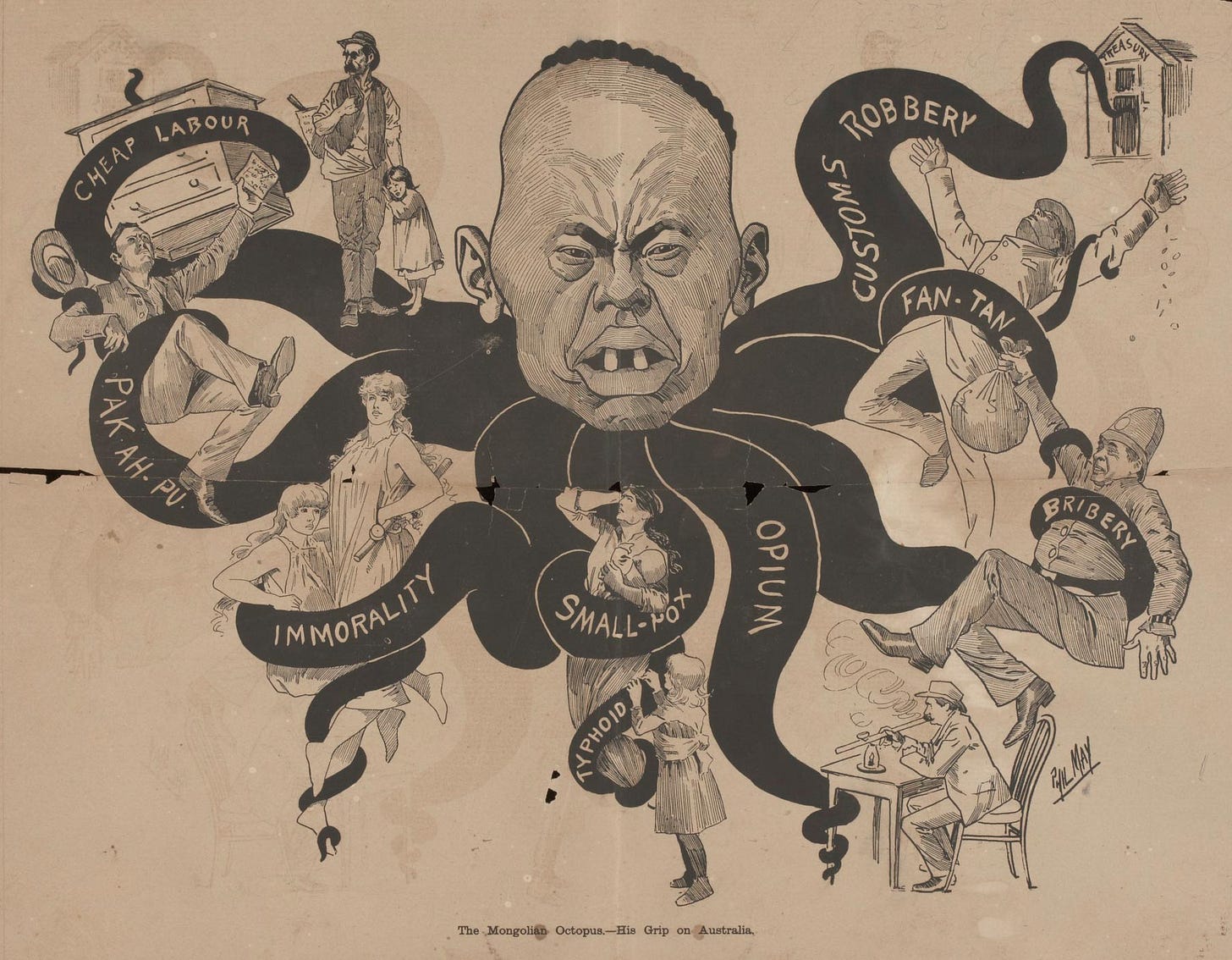
In fact, San Francisco and California as a whole was rocked with Anti-Chinese violence exactly a century before Julie's time, which was so explosive that they were just outright lynching Chinese men in the street. I'm not saying we needed some poor girl to witness a Chinaman being strangled with his own queue, or anything, but, so far as I'm aware, roving bands weren't looting and pillaging San Fran's Chinatown in the seventies and just straight up killing guys in the street.
Maybe it’s just me, but I feel like if you really wanted to expose kids in the early 2000’s to a totally different historic period, they would have done better to explore 1870’s California than California as most of our parents would have lived through it. But, I don’t think Julie’s stories are about exploring the time and place so much as exposing children to the societal shifts happening at that time. Which, hey - you know what? Valid. Like I said - you can’t ignore the immense changes in relations between the sexes and races when you talk about the 70’s just as you can’t ignore that little flare-up in Continental Europe and the Pacific in Molly’s stories in the 70’s.
But, my father actually lived in California in the 70’s. Now, he lived in L.A., not San Fran, but, still - he was there. He saw it. He lived it. That time period was much more… accessible to us as children through the people around us than any of the other girls and their respective time periods. I mean, hell, Julie would only have been three years younger than my mother. Barring some medical catastrophe or accident, odds are that Julie would probably still be alive today. I don’t really want to imagine how she might have turned out, either.
For reference, in 2007, when Julie debuted, 1974 - the year in which her first story takes place - was only 33 years removed.
In 1986, at the series launch, Molly, in 1944, would have been the closest to that time, which was 44 years removed. Maybe I’m wrong, but I think the average girl in 2007 had a lot more in common with the average girl in 1974 than the average girl in 1986 shared with a girl in 1944.
I’m not saying that this was some sort of pernicious act or some sort of woke plot to indoctrinate children in the radical ideas of the 1970’s counter-culture, which by today’s standards seem positively quaint in comparison, to what I’d call outright anti-culture today. History is history, even if what happened then is not exactly something we agree with now, and it still deserves to be taught, explored, and understood.
But I don’t think it’s a coincidence that, as soon as Mattell takes the wheel of the American Girl series, their first character, rather than explore a more obscure, less understood, or different time in American history, or follow a girl of a minority race or religion that the core demographic could stand to learn more about, they immediately veer hard into an era certain political shifts that resulted into the current cultural paradigm today, and established new cultural and political norms that are so glorified and sacrosanct they might as well be religious gospel in modern times, and away from more… difficult, challenging, or uncomfortable time periods and themes. Like, what I’m trying to say is it was probably much easier for Mattell to create a character based in California 33 years behind them that was facing very modern issues and had talking points that were still very much in vogue circa 2007, versus creating a character from California when it was basically an alien planet 133 years prior.
Hey, by the way - where is Mattell based? Well, a little Google search, and - oh.
Oh.
Returning to the timeline of doll releases, Ivy Ling would be released concurrently with Julie as her best friend, which, c’mon - where’s Kirsten’s best friend? Molly got Emily. Samantha got Nellie. Seems like a certain Scandinavian is being left shivering out in the cold, doesn't it?
Speaking of Nellie... Poor, poor Nellie. Remember how I said she got her book? Her accessories? Her dress? Well - that was all she got.
And it was all she was ever gonna get.
In 2008, only a year after Julie’s release (seeing a pattern?), Mattell announced that Samantha, after 22 years of service, was going to be “archived”. This was simply a kind way of saying that she was… going away.
Indefinitely.
Samantha was the first character to enter the dreaded archives of the American Girls, boxed up and shipped off and stored away in deep in the bowels of Mattell’s sprawling reserves of IP’s by top men to meet an uncertain fate.
It wasn’t just her doll that was getting mothballed, either; her clothes, her accessories, and, perhaps most depressing of all, even her beloved books - they were all going away, too, in what feels like a damnatio memoriae issued by Caesar Barbicus Mattellus Maximus. And, much like a pharaoh or khan of yore being entombed with their servants and guards, regardless of whether or not said servants and guards were dead, too, she wouldn’t be going into the archives by her lonesome.
Four years. Four brief, scant, fleeting years - that was all Nellie got before she, too, had her face, her name, her very memory stricken from the annals of American Girl records along with Samantha.
She never even got a second dress.
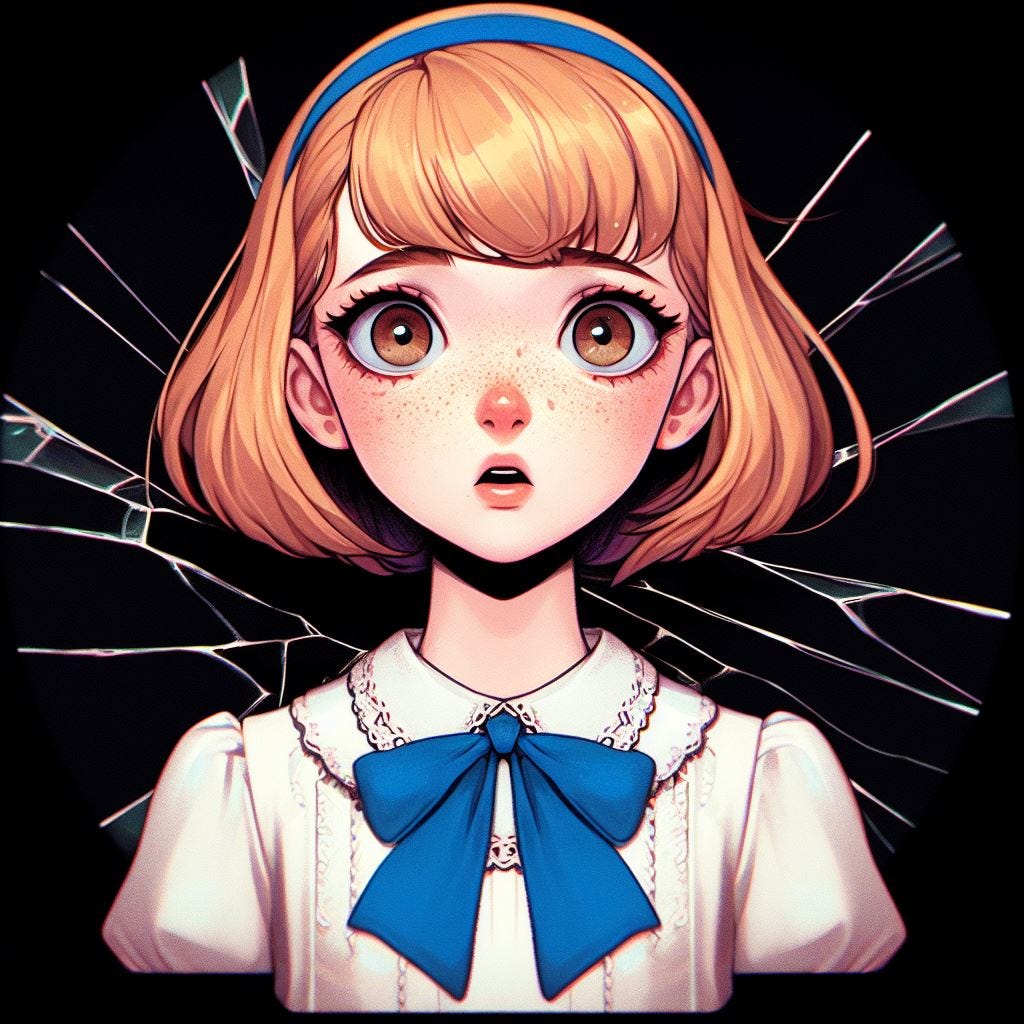
The brightest stars, they say, burn out the fastest.
Even though the decree came down in 2008, it wouldn’t be until 2009 that the last of Samantha and Nellie’s merchandise was officially sold out and, like animals that quietly dwindled away into smaller and smaller populations, disappeared from stores and slipped away into the annals of history. That same year, the next historical character, the empty seat left behind by Samantha’s vacancy was filled by the introduction of Rebecca Rubin. Like Samantha, Rebecca’s stories took place in New York City, and only a scant ten years after the events of Samantha’s own.4 However, where as Samantha was of founding protestant Anglo stock, Rebecca belongs to a family of Ashkenazi Jews that immigrated from Russia.
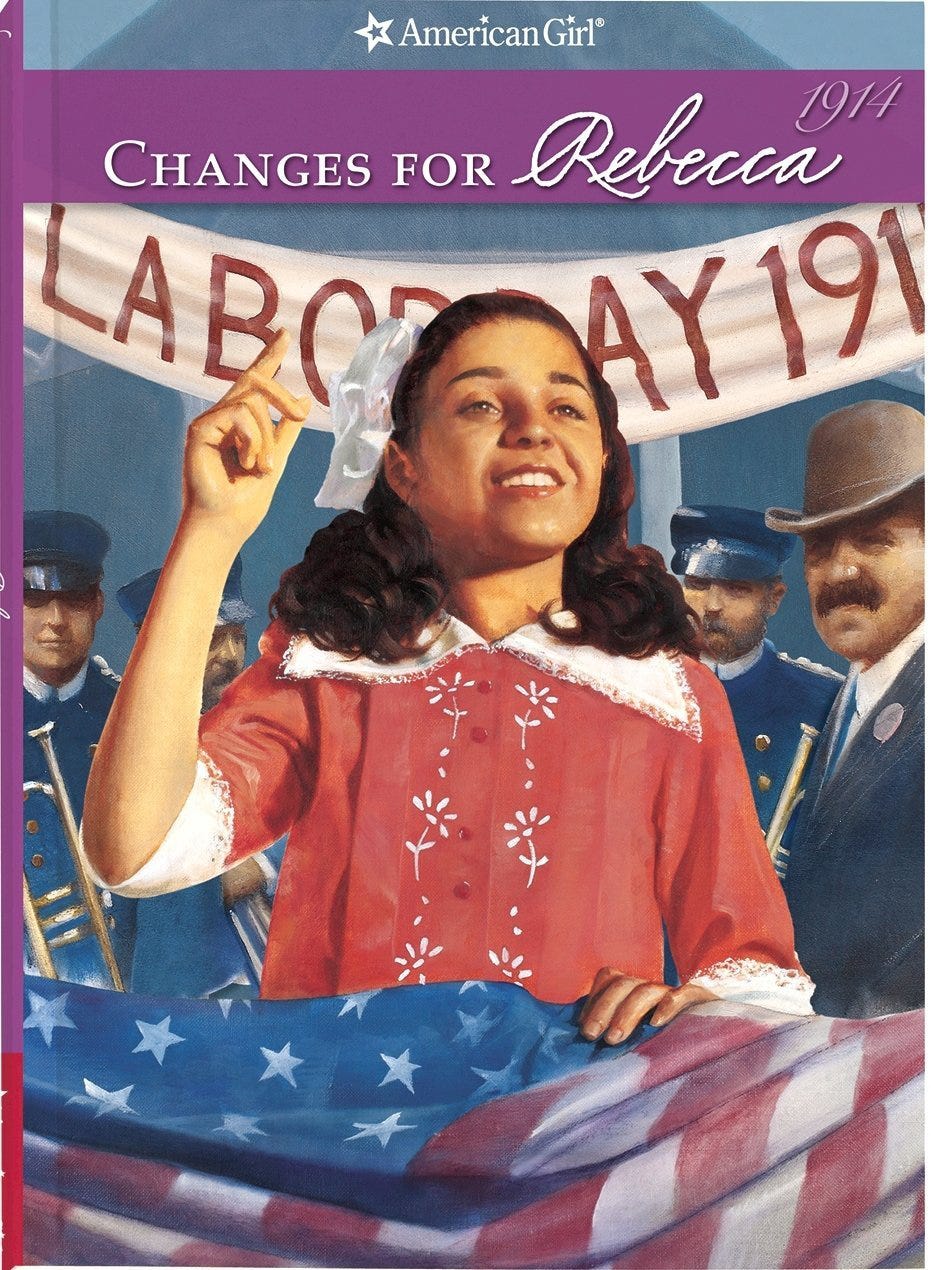
I'm sure there is obvious commentary that could be made there about an immigrant displacing the proto-typical WASP, something about demographics, immigration, so on and so forth, but… well, I'm feeling about as spicy as a plain bagel with cream cheese, so to spare all the kvetching and schvitzing, I'll leave that dreidel on the table.
Anyone else hungry for a pastrami on rye, now?
Oy gevalt.
Delicatessens aside, later that year, another hit on one of the OG girls would be ordered.
Kirsten would be the next of the girls to be archived, all with the dubious honor of never receiving a best friend.
And then… there was one.
They did say that Molly was a feisty one. She refused to go softly into that good night. I can’t find any reliable information on what dolls were the most popular, but, I think it must speak to Molly’s popularity that she persisted for as long as she did. She managed to out-last Felicity Merriman, who was archived the year after Kirsten’s unceremonious departure. She even managed to make it through the release of not one, not two, but three new historical characters.
But no one hides from Barbie forever. You can always run, but you’ll only die tired.
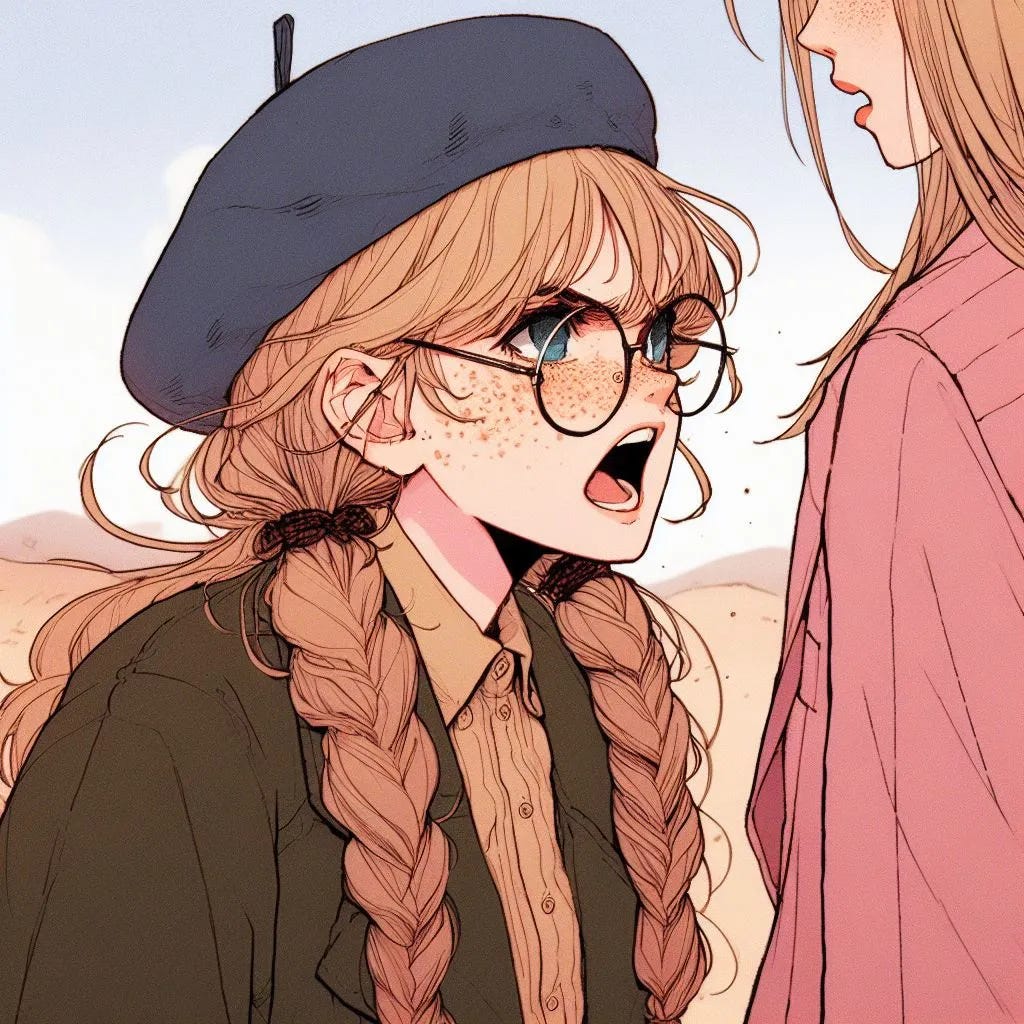
The inevitable would catch up with Molly in 2013, in which she and her friend Emily would join her former compatriots in the dustbin of American Girl history, consigned to the archives.
And then… there were none.
Okay, okay - that’s enough fun with the Bing image generator.
Now, these moves were… controversial, to say the least. Long-time fans of the line were less than happy to see these beloved characters effectively be erased from the line, books and all. Even people who grew up with the line and had long stopped collecting the dolls were disappointed to hear about the fate that befell the archived girls. These characters meant a lot of things to a lot of people, and for Mattell to so nonchalantly toss them away to make room for new characters… well, it didn’t sit well with folks, especially when only exhibits and displays at the American Girl stores of their merchandise were left to stand as testaments to their existence, like extinct, taxidermized animals in the quiet, sterile halls of a museum.
In fact, a lot of articles I read while doing research were published around 2013 in the wake of Molly’s undignified end all seem to opine the same sentiment - the line isn’t what it used to be. Many complained about the fact that the stories of the newer characters were not as richly detailed as their past counterparts, and that by focusing on more recent time periods, the line was losing what made it so unique and appealing to begin with. Some talk about the fact that, after years of attempting to complete the collection of Molly or Samantha or Kirsten, they were no longer able to do so. There was even an op-ed published to the Washington Post weighing in on the controversy And I don’t think it’s any coincidence these articles followed the disappearance of the last original American girl.
This displeasure among both fans and outside observers was not lost on Big Barbie.
Hardly a year after Molly’s archiving, in Fall of 2014, it was announced that, after six years of retirement, the original American Girl, and the first victim of the dreaded archives, would be making a glorious return under the label of BeForever, with her books in tow.
And the community was hyped. There were collectors that had been introduced to the line after Samantha’s retirement that were excited to finally have a chance to acquire the character that was arguably the first of the American Girls, while even more fans of the line, current and previous, were glad to see the beloved Progressive Era Princess return for a new generation. Step aside and bow down, plebs, because the original gangster was back on the block.
And, when Samantha’s second debut finally hit, it was met with a single, unified gasp of -
Who the fuck is that? ‘Cuz, uh - I know Samantha, and that? That ain’t her. This is, like, made-for-TV-movie-adapatation Samantha. Great Value Samantha. Wish.com Samantha. Am I on candid camera? Are we being punk’d? Is that a thing they still do?
This supposed Samantha came packaged with a different dress than her original incarnation and several changes to the face.
Even though it seems some people actually prefer the newer face mold, overall, it seems that most people prefer the original Samantha doll for having both a superior and more period accurate wardrobe.
But, more than the doll, the real damage that would leave a bad taste in fan’s mouth from the BeForever re-release would be done to the books. Even if the doll was slightly less well-constructed than the originals, it seems like a lot of collectors - especially newer ones that came to the hobby after Samantha’s original retirement - were just happy to have the ability to add her to their collection in any form. But the books?
Gone were the lush, hand-drawn illustrations of the original series, instead replaced by these strange, heavily photoshopped pictures featuring a model that looked unlike either the original Samantha dolls or the illustrations from the books that lacked both the artistry and subtlety and charm of the former iterations. Just compare this -
To this, which looks like a MrBeast YouTube thumbnail, replete with that insufferable, overwrought O-face -
And you’re probably beginning to see why people were less than pleased with these changes. But, hey - they altered the cover. So what? If the contents were still the same, the story itself would be every bit as enjoyable as it was before, right?
Right?
Well, the original 1986 edition Meet Samantha, which came packaged with the Samantha doll up until her retirement, was 80 pages long. The edition of Meet Samantha under the BeForever relaunch was 60 pages. This was a trend that would continue as other dolls that had been mothballed were rolled back out in the following years under the BeForever label. Iconic outfits were discarded and replaced with cheaper, more simple, less period-accurate, alternatives that the community broadly agrees are visually inferior and less appealing. Entire chapters were omitted from books, while some books were simply never re-released and instead substituted with new, BeForever-exclusive replacements that, supposedly, are more simple in both prose and story. Hell, they didn’t even bother re-releasing all the archived girls under the BeForever line.
Notice anyone missing? Anyone… important? Anyone… Swedish? Yeah - for being so popular with girls during the original run, as her name seems to come up more than any other when doing research, Mattell really fucking had it out for poor Kirsten. But, in a way, they might have unwittingly done her a favor. After all, when I saw what they did to Molly… oh… my girl…
The dorky circle-specs… they got rid of her fucking dork-ass, poindexter, DnD playin’, um, akshually circle specs! That was her most endearing feature, you tasteless, soulless, joyless, miserable hacks!
Fuck me, if they relaunched Kirsten, they’d probably nix her iconic braided-bun hairstyle and just give her a yass kween slay girl-boss undercut! The temerity of these… these absolute losers. Let Molly be a fuckin’ nerd, you animals! You wanna get rid of her braids, too? Are those too lame for girls today? You wanna water her down and make her just another bland, boring, generic girl with no distinguishing features or quirks or idiosyncrecies or charm whatsoever?
Let these characters be unfashionable, damn it! Let them have styles and clothes that reflect their time periods and what was popular then! Not everything needs to be altered to reflect 21st century sensibilities, which fucking suck anyways! The entire point if the line was to show these girls as they would have been, not as losers in modernity would want them to be! That defeats the entire purpose of the fucking original toys and books entirely!
I hate you! I hate you, Mattell, I hate you!
It's a good thing that the timeline is effectively superfluous at this point, since it’s abundantly clear Mattell doesn’t give a shit, so, neither should I. After the launch of BeForever, which, as you can probably tell, was met with lukewarm reception at best, the whole timeline goes from relatively simple to butt-fuck insane as a revolving door of dolls be introduced, archived, and relaunched under the BeForever line begins to spin at a blistering speed.
Remember how I joked about their being a “double-event” in the last post? Well, in 2011, it happened, when Cecile Rey and Marie-Grace Gardner of ol’ time Nawlin's were introduced simultaneously.
And were promptly archived in 2014. That should tell you how fast that wheel was spinning. These girls were coming in, faster and faster, and the quality declining, little by little, which, as simple math would dictate…
Now, this seems as good a time as any to mention that this problem may have been one Mattell inherited, albeit one that was only in its beginning stages.
Remember how I said the spice content must flow? That new content, new toys, came increasingly hard and fast? Well, even before Mattell acquired the brand, starting in 1995, a line of dolls made to represent modern girls was launched. The line seems to have gone through several names over the years, including American Girls of Today, Just Like You, My American Girl, and, the name it’s best known by, Truly Me, which is dangerously, comedically close to:
Either way, these Literally Me Truly Me dolls, by the time the line was discontinued in 2022, had a staggering 117 dolls, which averages out to 5 dolls released a year. These dolls had no names, no set character or personality, no nothing - they were basically blank slates, so you could make your own Original the Character (Do Not Steal!) out of them.
This line seems to have engendered a bit of controversy from the beginning, and it seems that, after a while, it began to be something of a sticking point in the fandom, if the entire fucking section on the Truly Me line’s page on the American Girl wiki dedicated to controversies is anything to go by. And, yeah - a lack of focus on character building and Mattell’s disregard of classic and historical characters is on there.
Alongside these Truly Me Dolls and the Historical Figures and their Best Friends, starting in 2001, you also had the Girl of the Year line, which are annual releases exclusive to the year in which they debut, because, y’know - FOMO is a powerful motivator, especially when it comes to hobbyists and collectors with almost neurotic, completionist tendencies. The gimmick of the Girl of the Year line is that each new girl is both contemporaneous to the year she’s released, and tied to a certain programs, charitable causes, or awareness campaigns, which is… admirable, I suppose. This line, too, has entire section on it’s wiki page dedicated to controversies, which are largely the same as the complaints lodged against the Truly Me line5.
There are actually a handful of other doll lines that are put out under the American Girl brand, including smaller, cheaper mini-dolls of the historical characters, baby dolls, and, for the low, low price of $220, you can customize your very own full-size American Girl from the ground up, exactly as you want her. The idea is that you can make one that looks like you, but I don’t see the appeal of spending two hundred plus bucks on creating a small, inanimate homunculus of myself to tote around. Maybe that’s just me, though.
Unfortunately, when I played with it some, I was disappointed to find a lack of clothing options that could allow me to create my own line of historical dolls, tentatively titled the History Harlots, so my plans to introduce a new generation of American girls to such illustrious, strong, and notorious women like Cleopatra, Eva Braun, Elizabeth Bathory, and Salome will have to wait.
The BeForever relaunch of many of the historical girls seems like it was a thin attempt to paper over these criticisms and throw a bone to the yapping dogs of the fandom, but even that didn’t quite work - the branding was ultimately ditched in 2019, and American Girl simply settled for re-releasing the historical characters without any new label or title, though, notably, the books with these most recent re-releases were even further butchered and watered down into abridged versions. Really, if you’re going to abridge an eighty page chapter book for third graders, you might as well not even bother and just ditch them entirely. Even though many have been re-released in their classic outfits, their original accessories, ancillary outfits, and original, unabridged books have not been re-released alongside them, which means the vast catalogue of collectibles that once made the line so exciting and enticing to collectors and young consumers alike are effectively inaccessible, ignored, and left behind. Even the newer historical characters are criticized for being very… unhistorical.
Take Courtney, for example - the second most recent historical character, who represents the 80’s, and all of it’s neon glory.
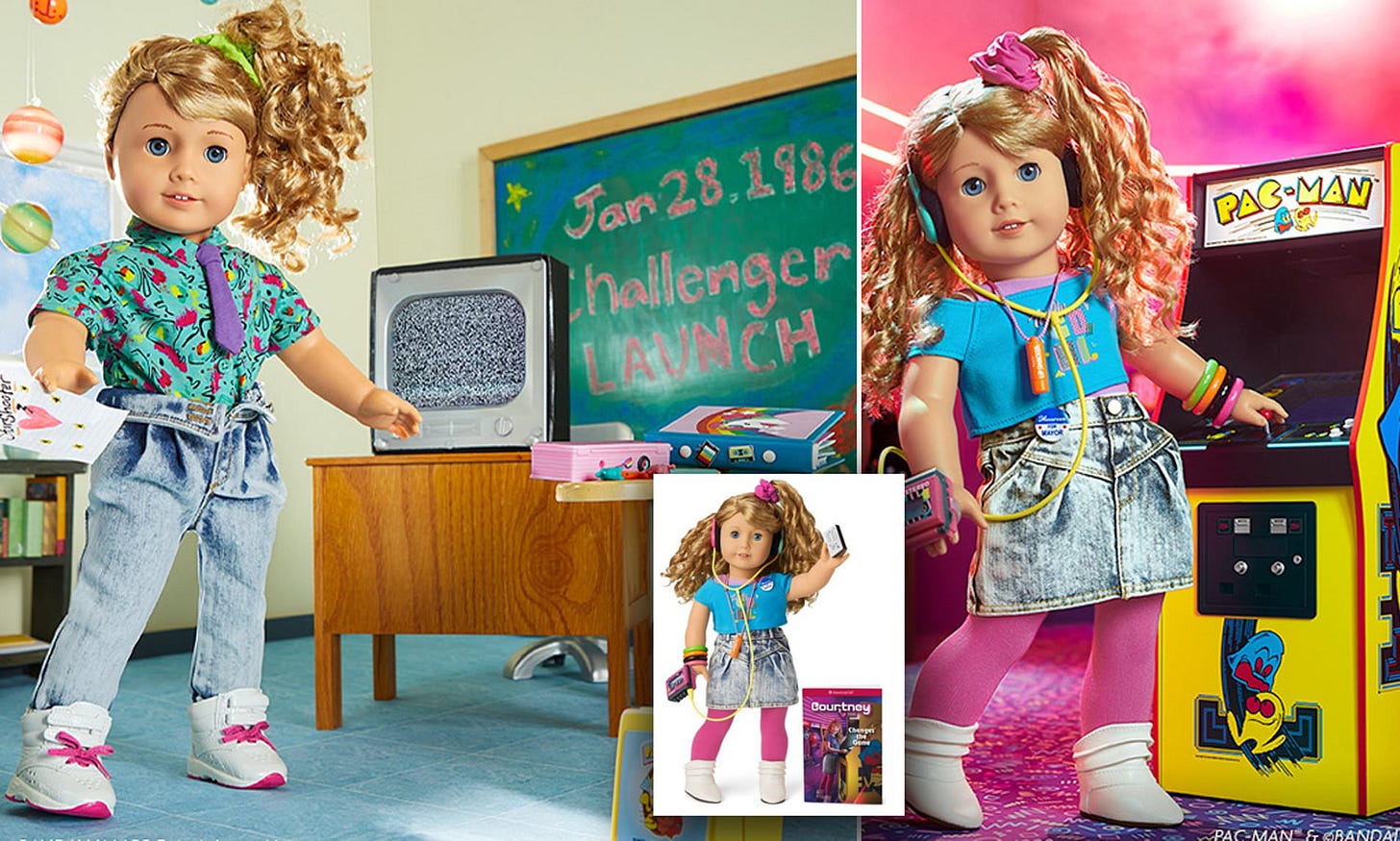
Now, as a Millennial, I wasn’t around in the 80’s. But, I didn’t need to be to know that everyone who says, Nine year olds were not dressing like that in the 80’s, are, by and large, right. Like, yeah, sure, this is how pop culture remembers the eighties, but pop culture also associated the 70’s with disco, when that was really only the dominant trend at the tail end of the decade. Saturday Night Fever, which codifies the aesthetic of that decade, didn’t come out until 1977, and the musical genre itself didn’t hit it’s peak until 1979. Yes, those things were there, but the 1970’s, as my dad always says, were visually more like the 60’s than what we like to imagine. The same thing can be said about the 80’s. My generation likes to think the average house in the 80’s looked like this:
When even I know the average house in the 80’s looked more like this:
It’s perfectly fine to indulge in the more nostalgic, flashy, and fun aspects of what we remember of these eras, whether it be loud, bold, colorful clothing or neon lights, but historically accurate, it is not.
I can better speak to the inaccuracy the newest members of the historical line, twins from the turn of the century. The twenty-first century, that is, which makes me feel old as fuck because I would have been around their age at that time. Now I’m historical, and I don’t like it. I’m not comfortable with it.
Anyways, maybe I’m wrong about the 80’s, but I can guaran-fucking-tee you, almost no nine year old girl in 2000 dressed like this:
Kids in Disney Channel television shows and movies did, but the average girl? Yeah, if she was wearing anything even remotely close to the outfits on those dolls, it was only because her mom basically shoved her into it to show off how cool and hip and with-it she was, and was just using her own daughter as a living, breathing, three-foot tall fashion doll. The average little girl in 2000 wore a pair of blue jeans a fucking t-shirt with a unicorn on it that her parents bought at Wal-Mart and you’d have been lucky to get her in anything else. Even the girly-girls were not wearing mary-janes and skirts unless it was picture day, and the tomboys, like the girl on the right, were not wearing backwards caps or chokers. If these latest entries into the line are anything to go by, it tells me that American Girl is no longer interested in educating children in how the past was, but rather, how we want to remember it.
Even the issues these girls face are cartoonish and clownish, almost self-parodical, with 80’s girl Courtney having an entire book in which she meets a little boy who has AIDS. And, look - I get that the AIDS epidemic was a real thing that had a lot of people shit-scared in the 80’s, but, really… how many little girls had to confront that directly? How many little girls were going to school with little boys that had AIDS? Maybe it happened, but, so far as I’m aware, it seems that the overwhelming majority of victims were adult men. If American Girls were meant to illustrate issues actual girls of the time would have faced, I don’t think the AIDS epidemic should be very high on the list. But, again, I’ll admit - I wasn’t there. This is all hearsay.
Again, to speak more concretely from my own experiences, one of Nicki and Isabela’s stories focus on their anxiety about the approaching Y2K. I’m sure some kids were aware of it due to schoolyard rumors and antagonistic older siblings, but, at the same time, given that I was that age at that time, I’d never even heard of Y2K. Hell, I remember we spent New Year’s Eve at my dad’s job with all of his co-workers and their families because just in case all those ludicrous whisperings of widespread computer failure turned out to be not so ludicrous, but not a damn one of us kids there knew why we were there. We thought it was just a company party, or something.
I’m not saying that bringing these things up is a bad idea, per say, and I’m certainly not saying they weren’t unimportant and that children at the time may not have had to cope with them, in one way or another, but, at the same time, I just can’t help but feel as if it’s a projection of largely adult insecurities and anxieties onto children who would have had other things to worry about. Like, really, circa 1999, even if I’d known about Y2K, I still would have been more concerned with the impending release of Star Wars: The Phantom Menace.
A lot of it reminds me of this new trend on TikTok where, apparently, Zoomers are convinced that the late 90’s and early Oughts were this bastion of wholesomeness, homeliness, and comfort. I saw one where it literally said, When children of all ages and genders got along, and sweets were made at home, not bought.
Yeah, no - me and my sisters were beating the fuck out of each other over who’s turn it was to play Putt-Putt Goes to the Zoo on our PC with the brand new Windows 2000 OS, Shrek’s face was on everything we bought, and our ketchup looked like Nickelodeon slime.
Was it glamorous? Hardly. But that was reality.
Much of the criticism lobbied against Mattell stems from this abandonment of the historical aspects, but I would argue that the company has done more than just shift the focus away from history to erase much of the original appeal and allure of the dolls. I’d go so far as to say that, by doing so, they’ve increasingly stripped away what made the American Girl brand so unique, and why they were so successful to begin with. In the first article, I discussed the exclusivity and luxury product aspects of the toys that seperated them from other competiters in the market. In this article, I discussed the gradual drift away from the educational aspects of the dolls, eschewed for greater focus on modern (or relatively) modern characters, both with historical figures and emphasis on the Girl of the Year line. But, there was another characteristic to the American Girl dolls that has also been lost over the years - an aspect that may not seem readily apparent at first glance, but is painfully clear if you take the time to compare them to their contemporaries in the toy market. And, for as much as I enjoy the historical aspects of the dolls and lament their loss… I think this last quality may be the most disappointing and, ultimately, greatest loss.
But, this installment is long - so much so that my computer is lagging when I type6, which means that it’s time to cut the article here. Next time, in what will hopefully be the last in this series, there will be more talk of Mattell, their crowned princess, bimbos, monsters, babies, the soft bigotry of low expectations, and girlhood at the end of history.
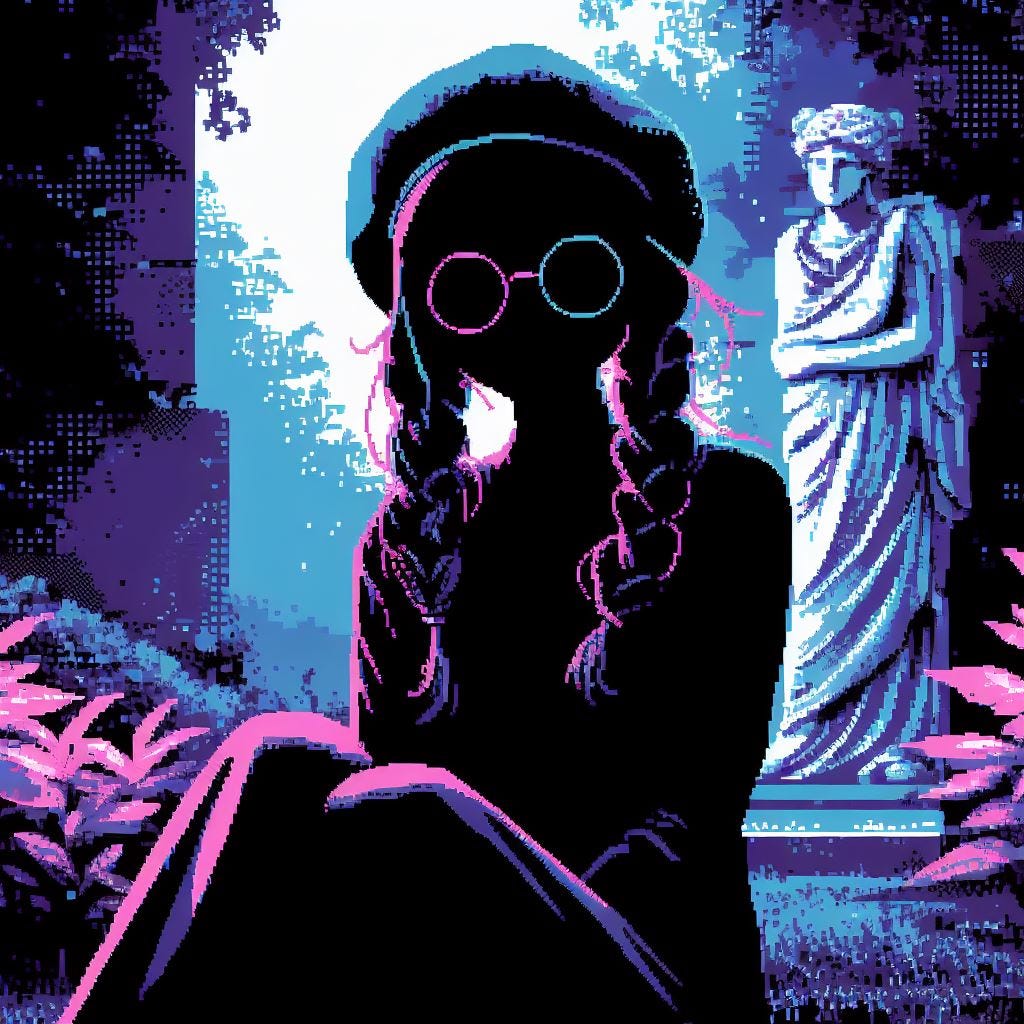
Hear me out - an American Girl-franchise movie, directed by David Lynch.
I can see Molly filling a ceramic pot with chocolate pudding and eating it, though.
Funny how the World Fairs keep coming up. Almost like… no. I shan’t say it.
Perhaps my brain is just poisoned by an over-consumption of Marvel content over the decades, but I can’t help but think that there was a missed opportunity to bring back Samantha and Nellie for a cross-over event. I mean, by 1914, they would have only been 19 or so.
Though, it is worth noting that the Girl of the Year characters receive books and, sometimes, movies to go along with them and build a story around them.
Substack, I love you, but, homie, please - optimize your site better.






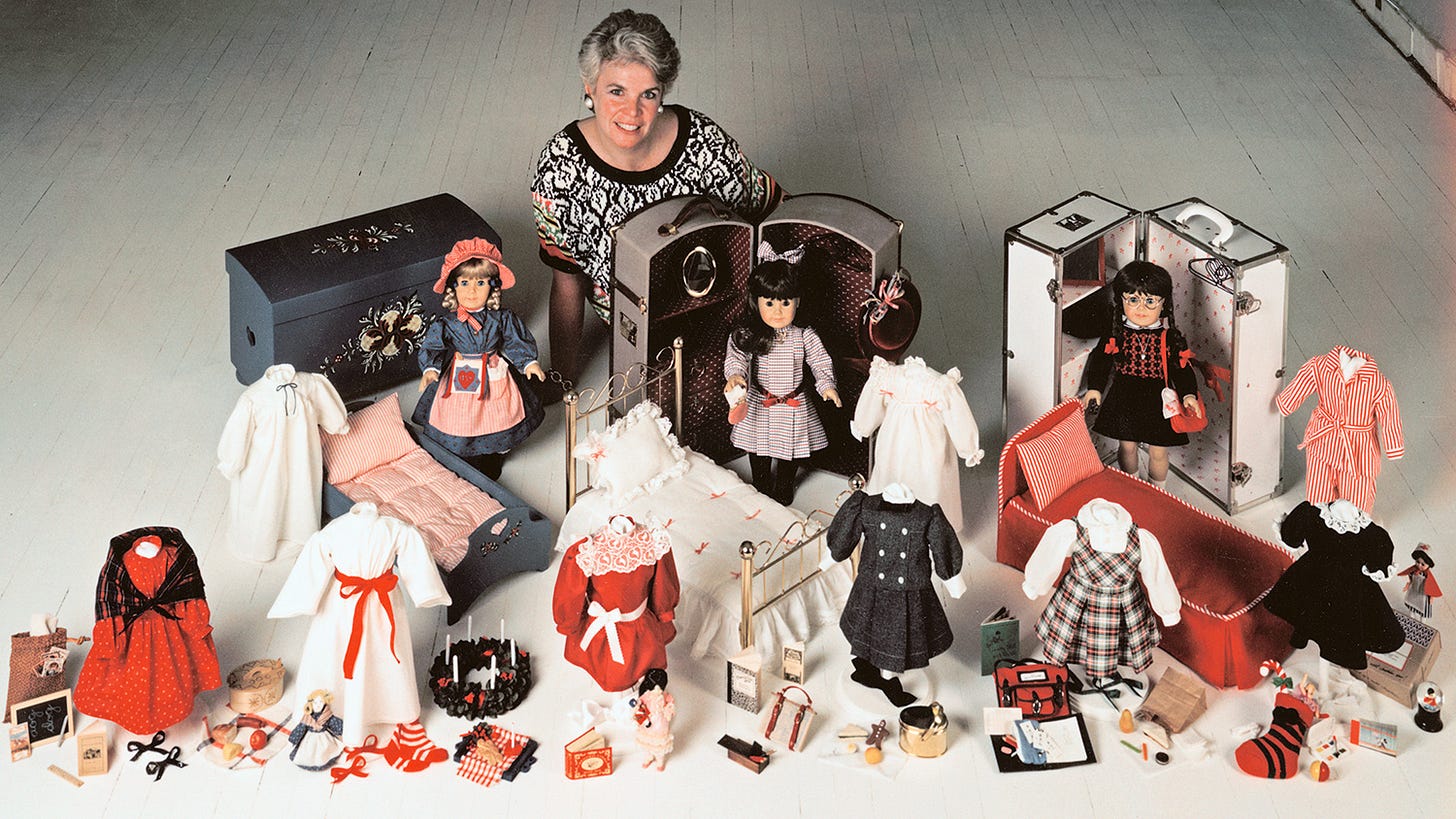
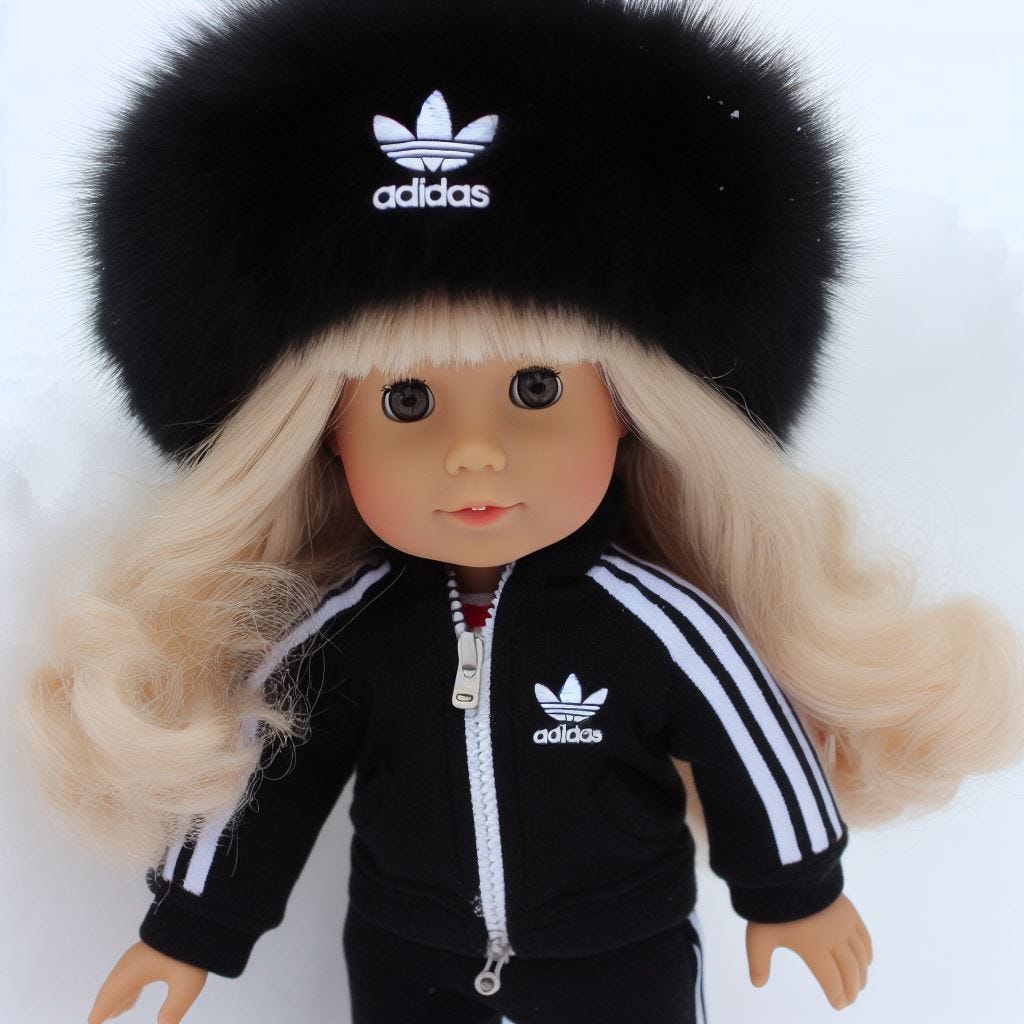

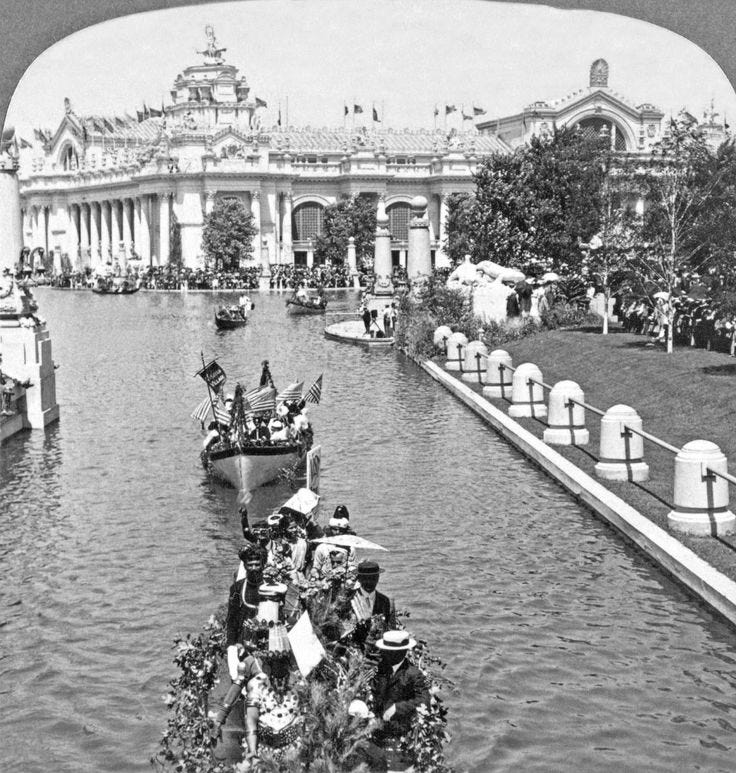
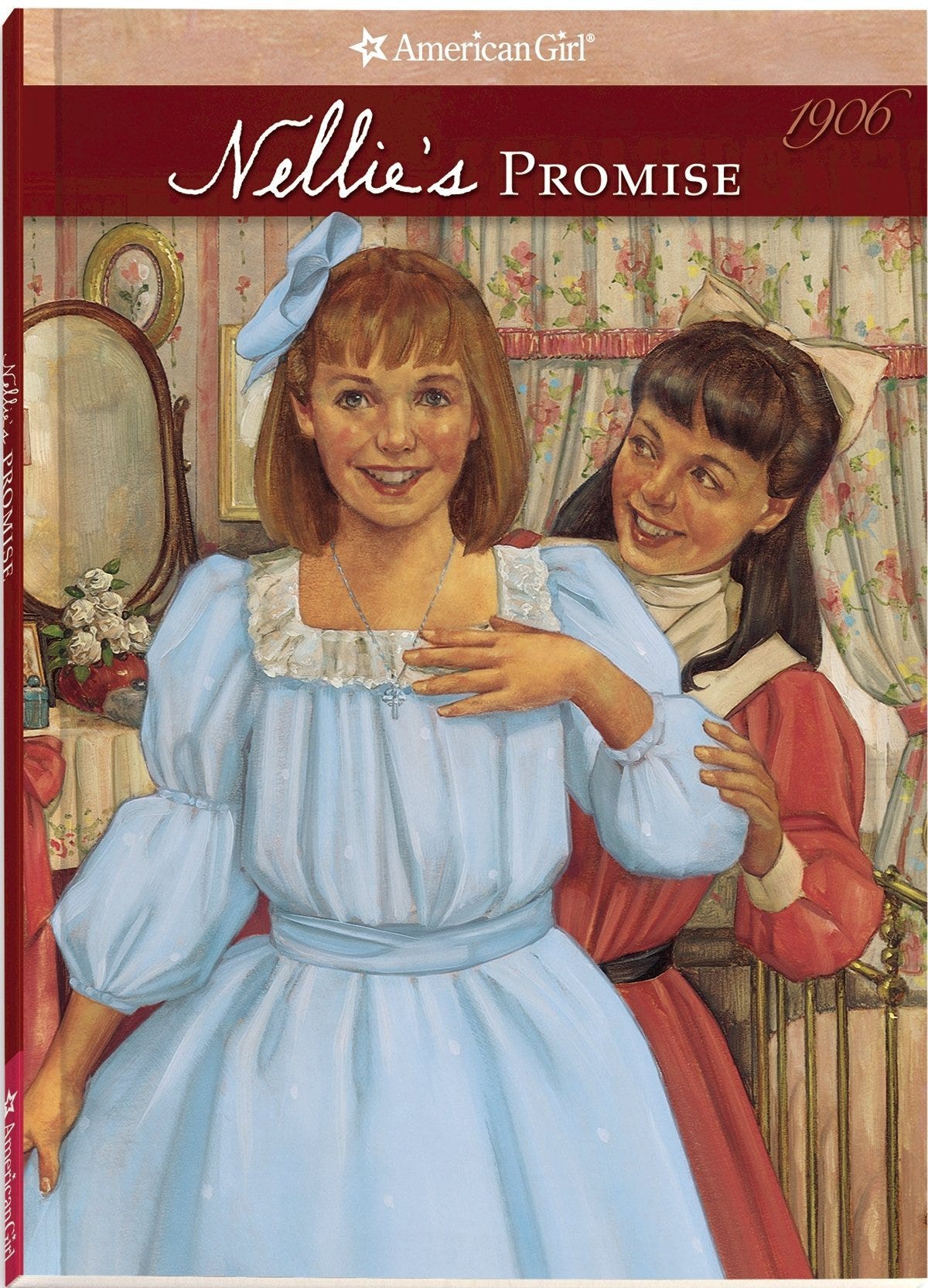

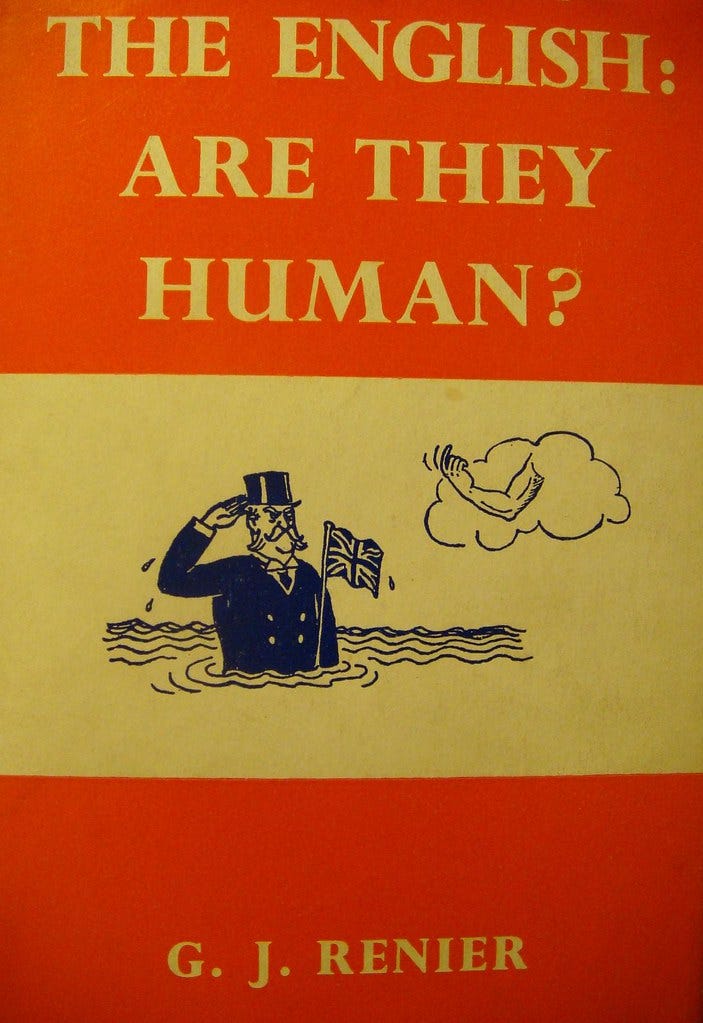

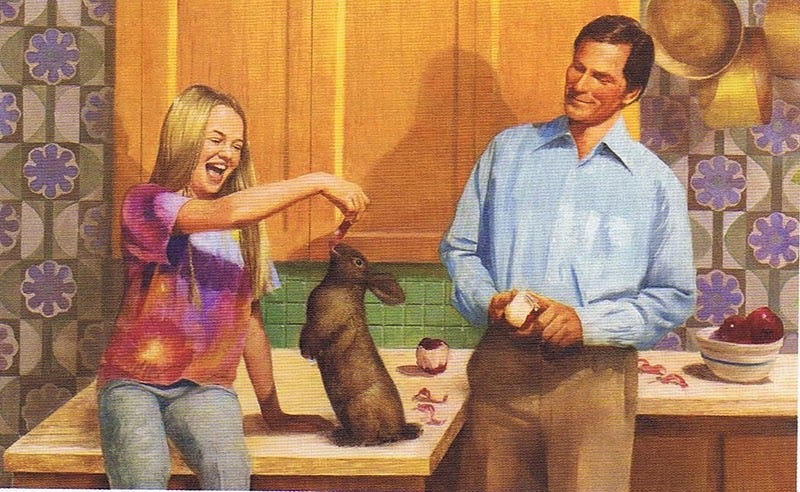
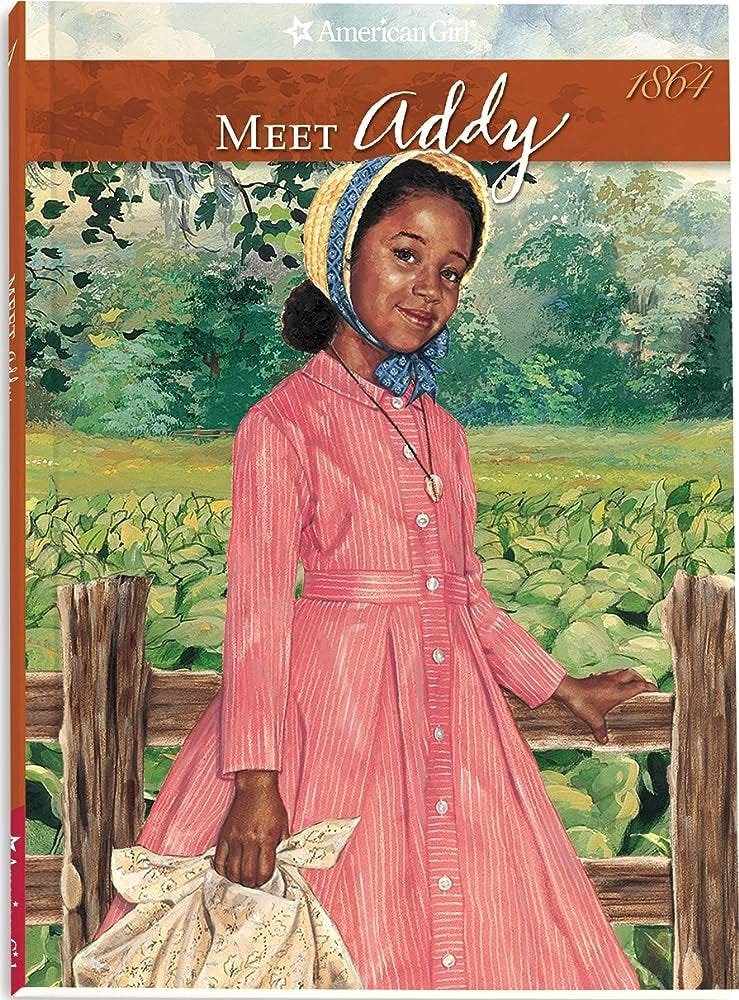
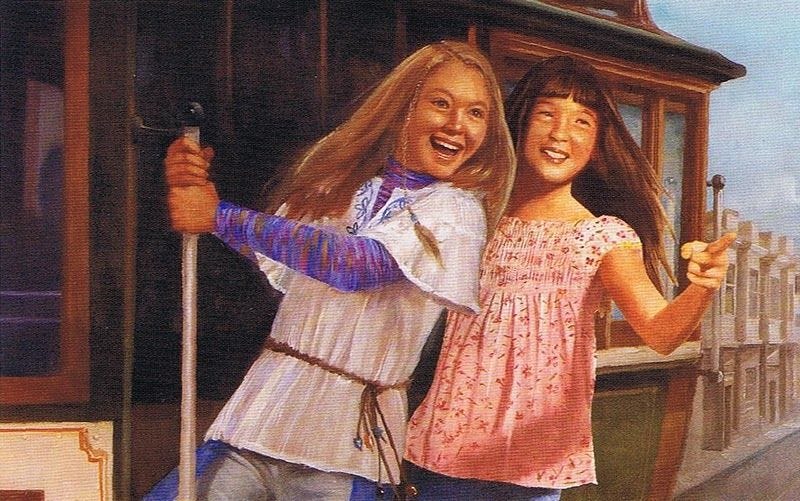

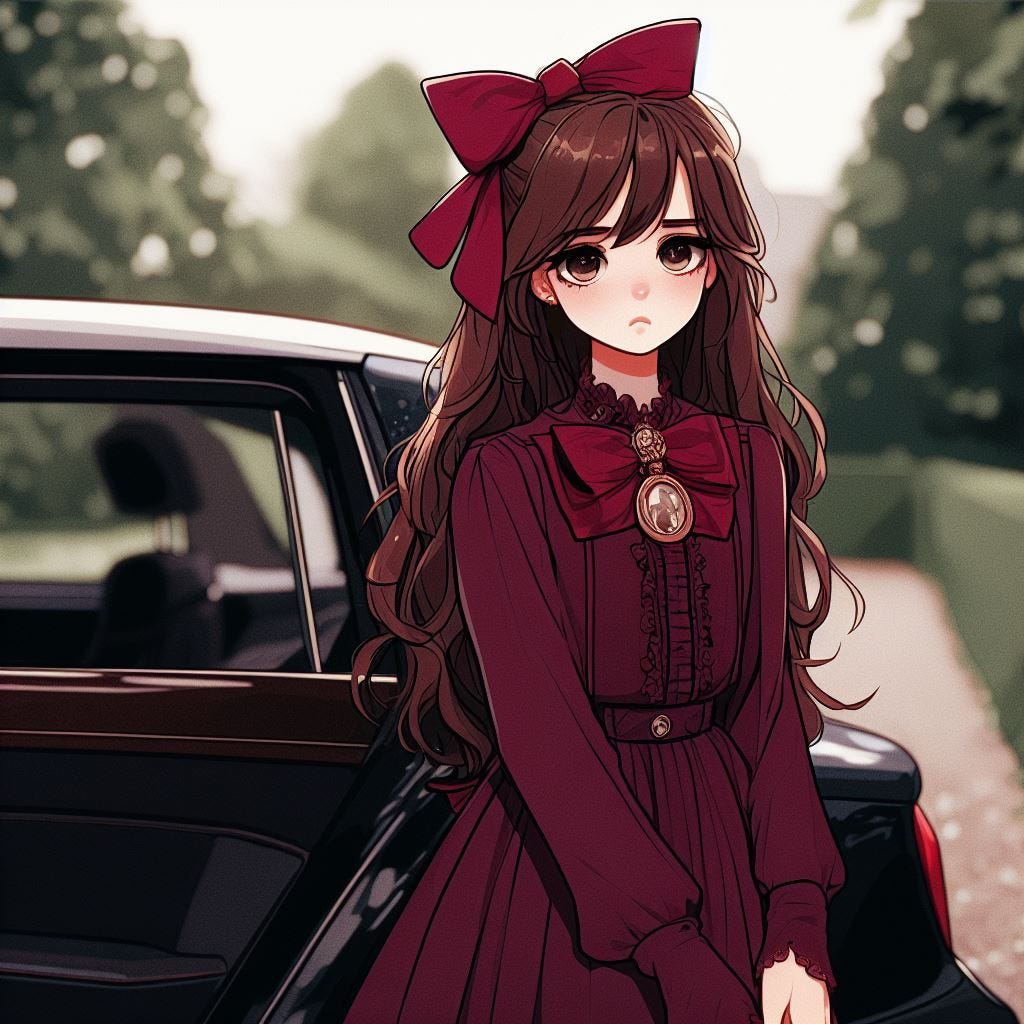


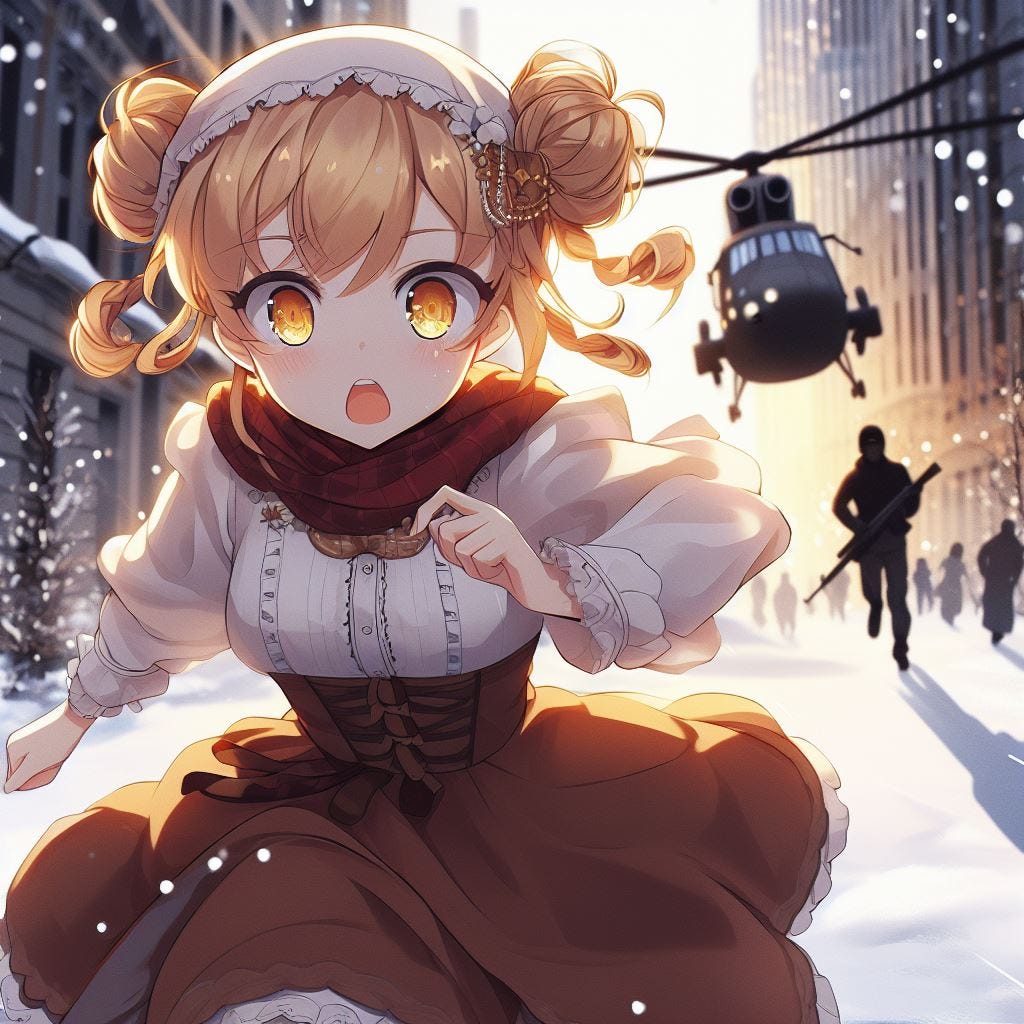
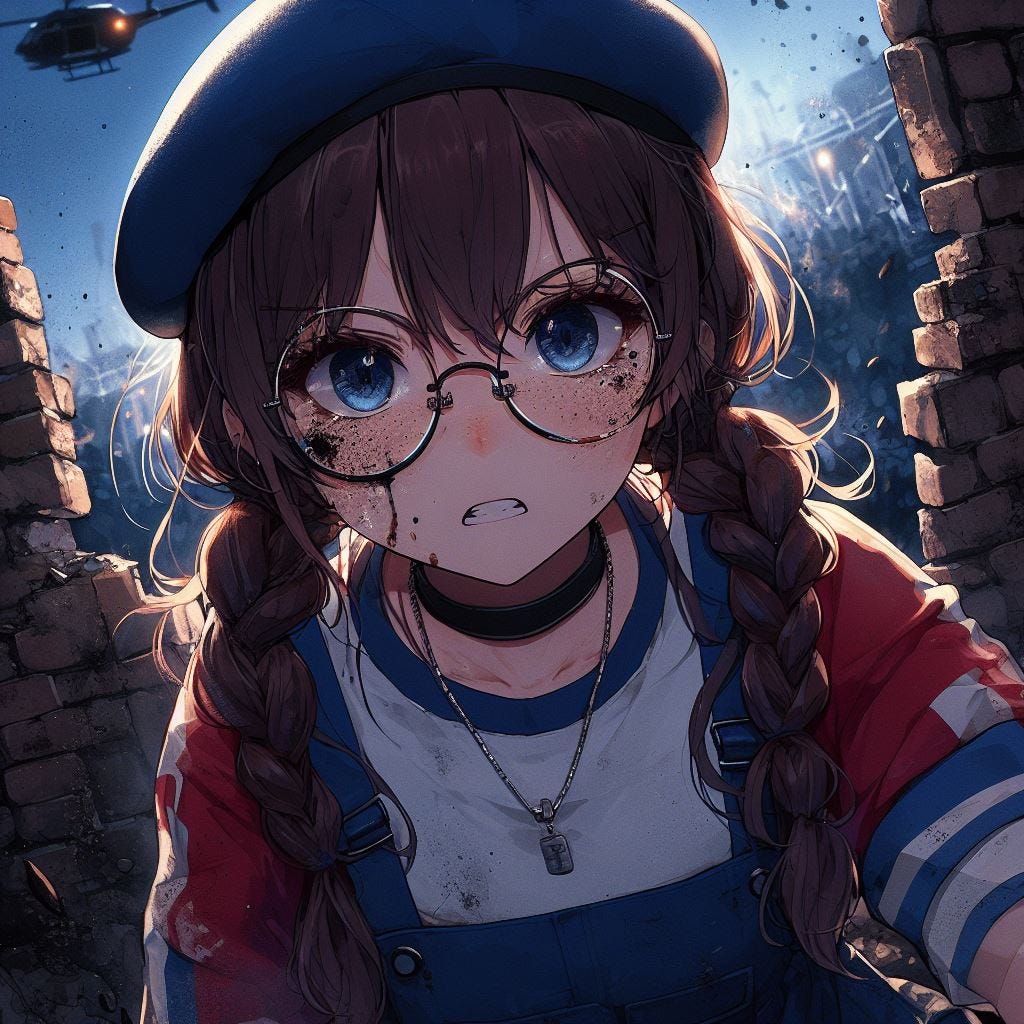


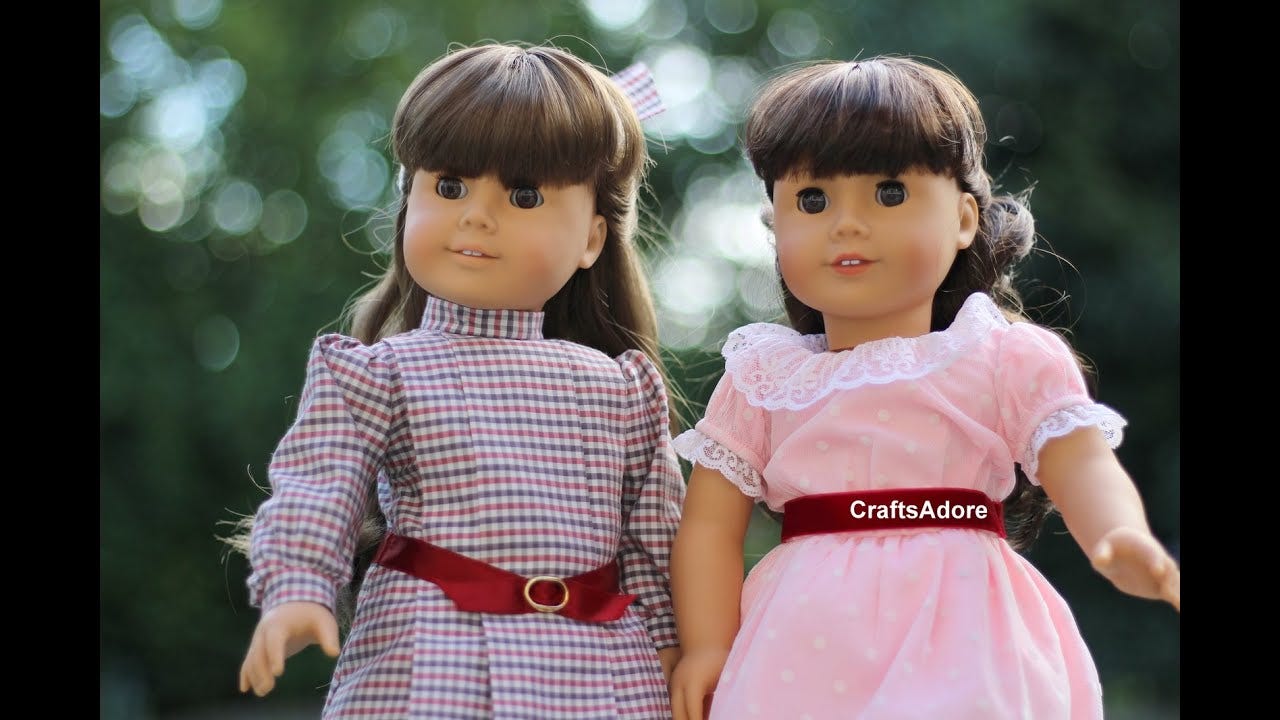
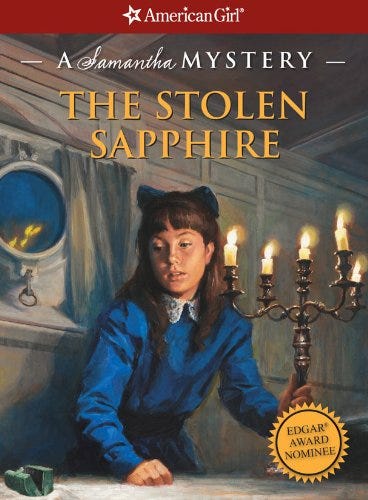
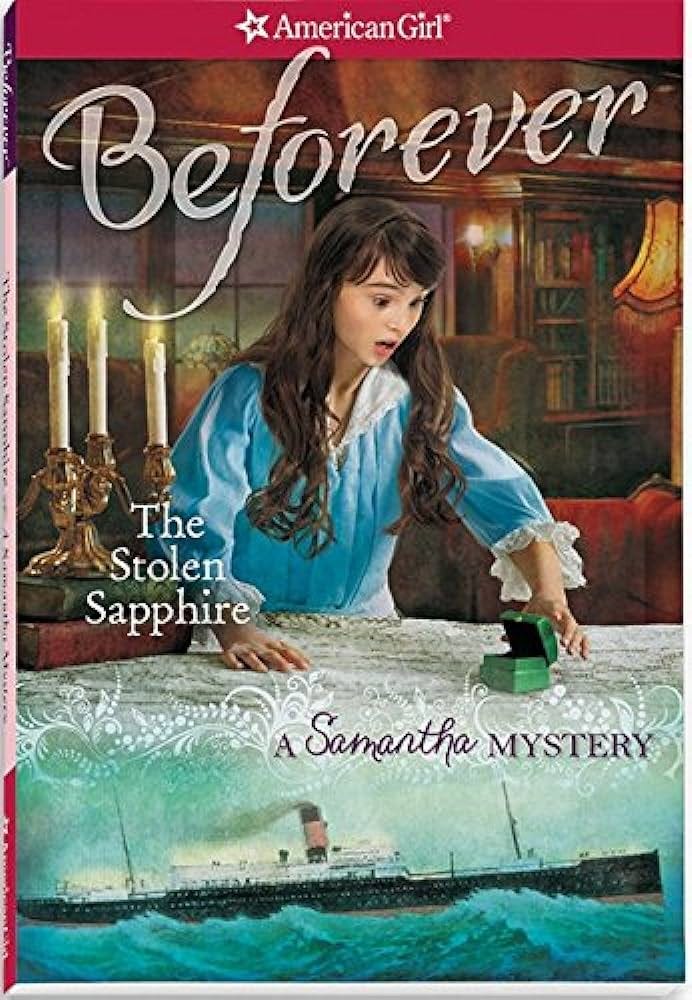


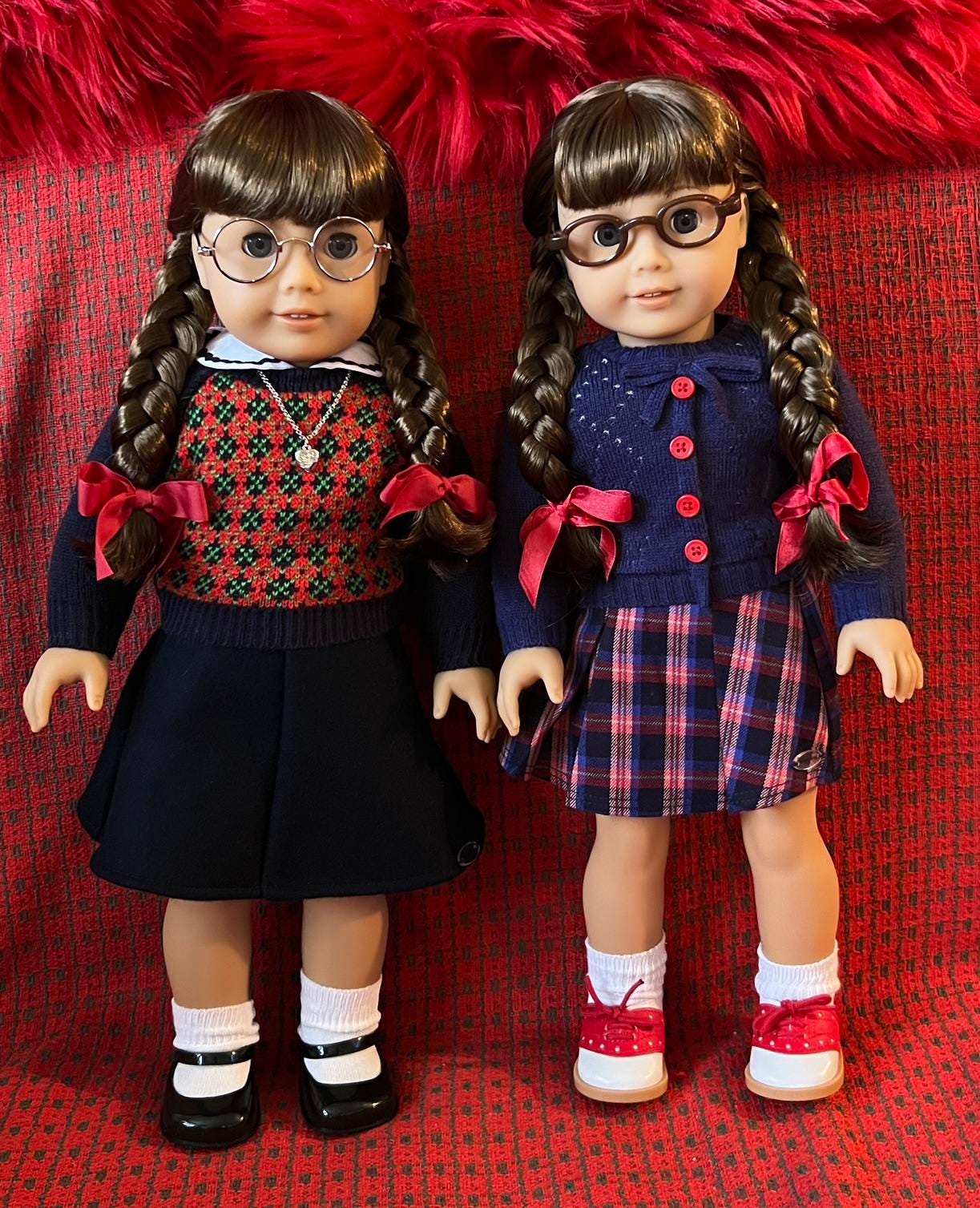


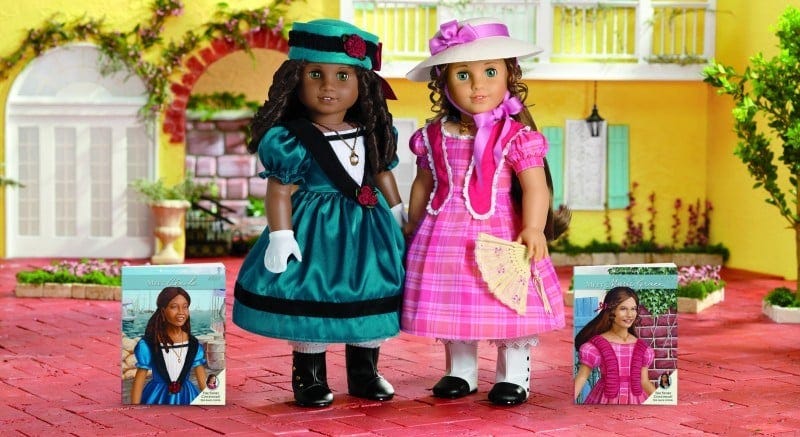


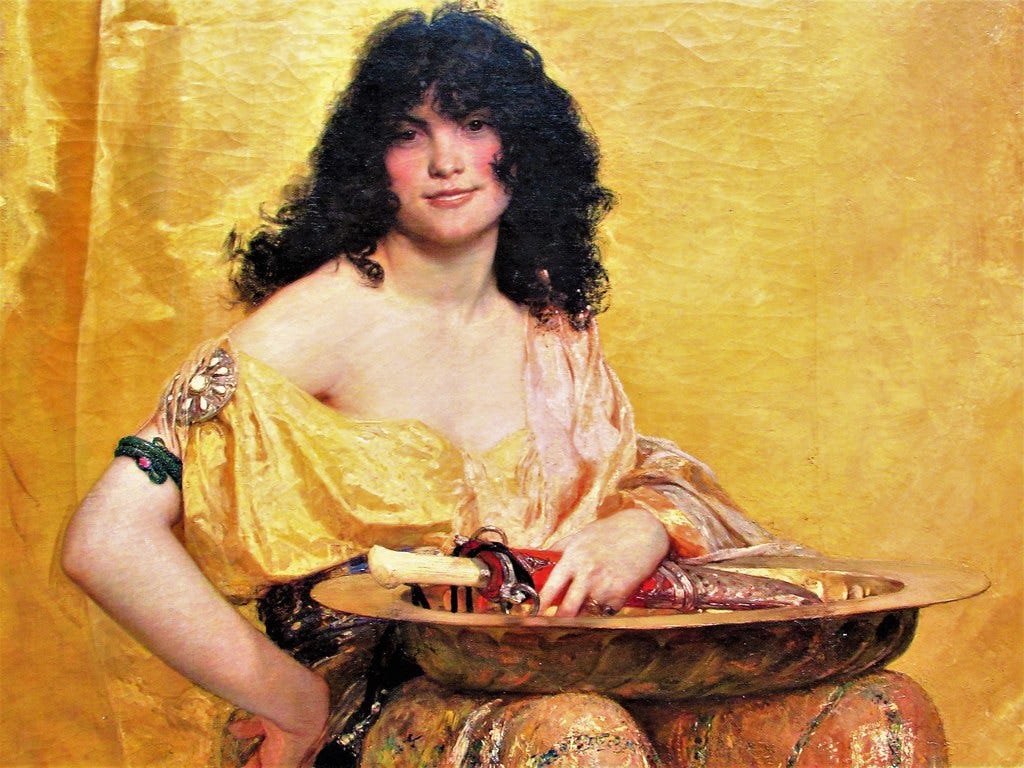

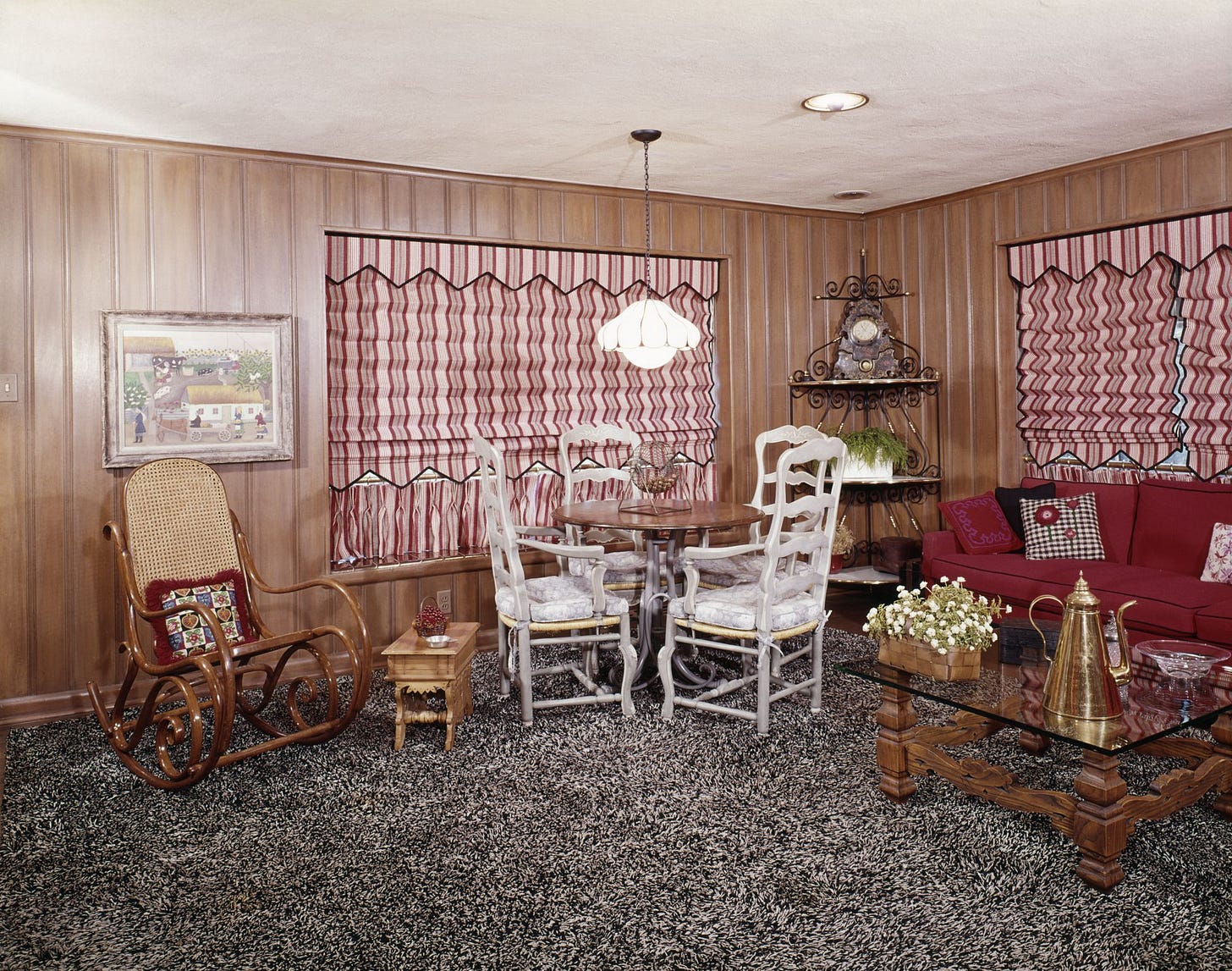
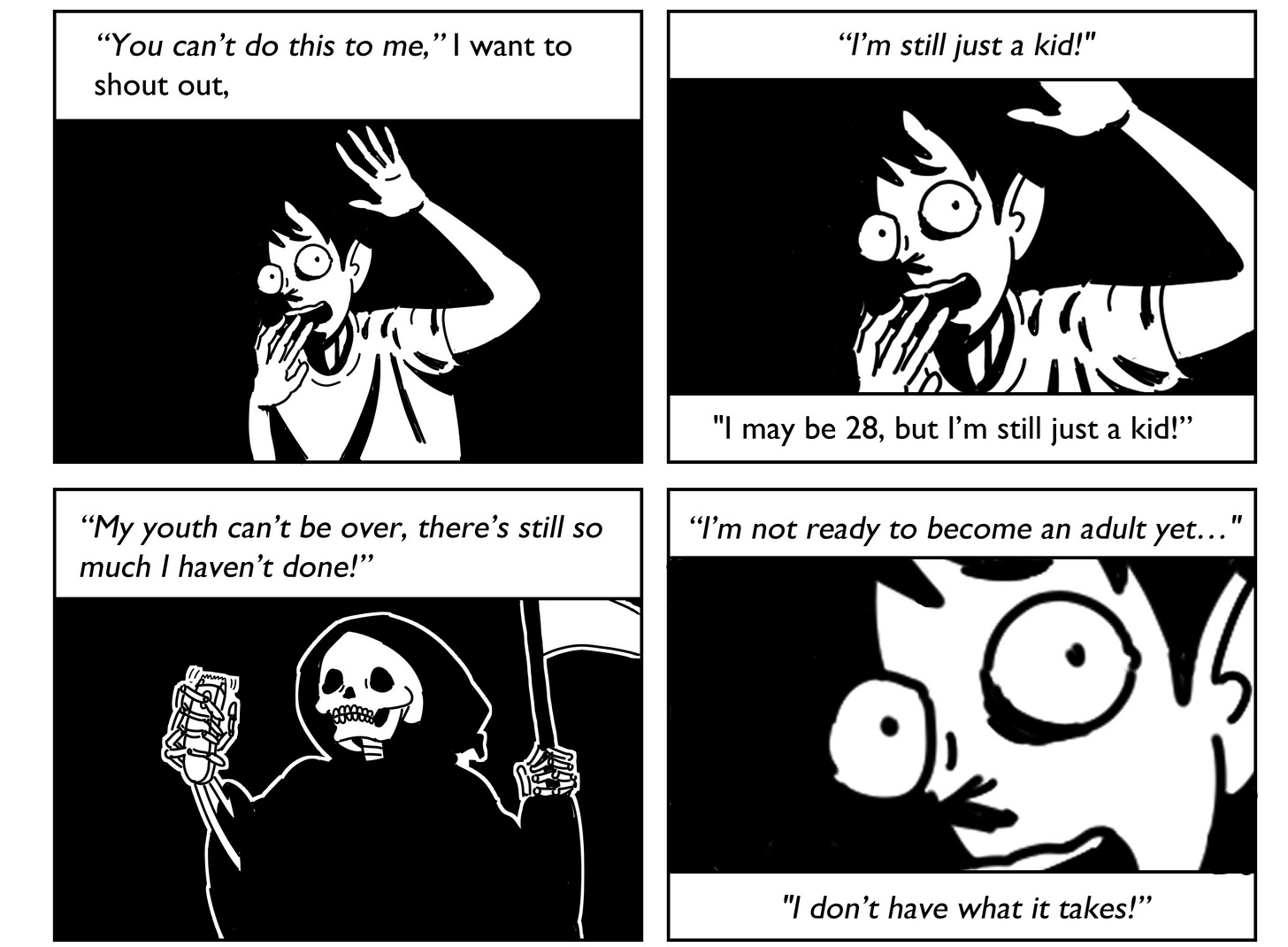
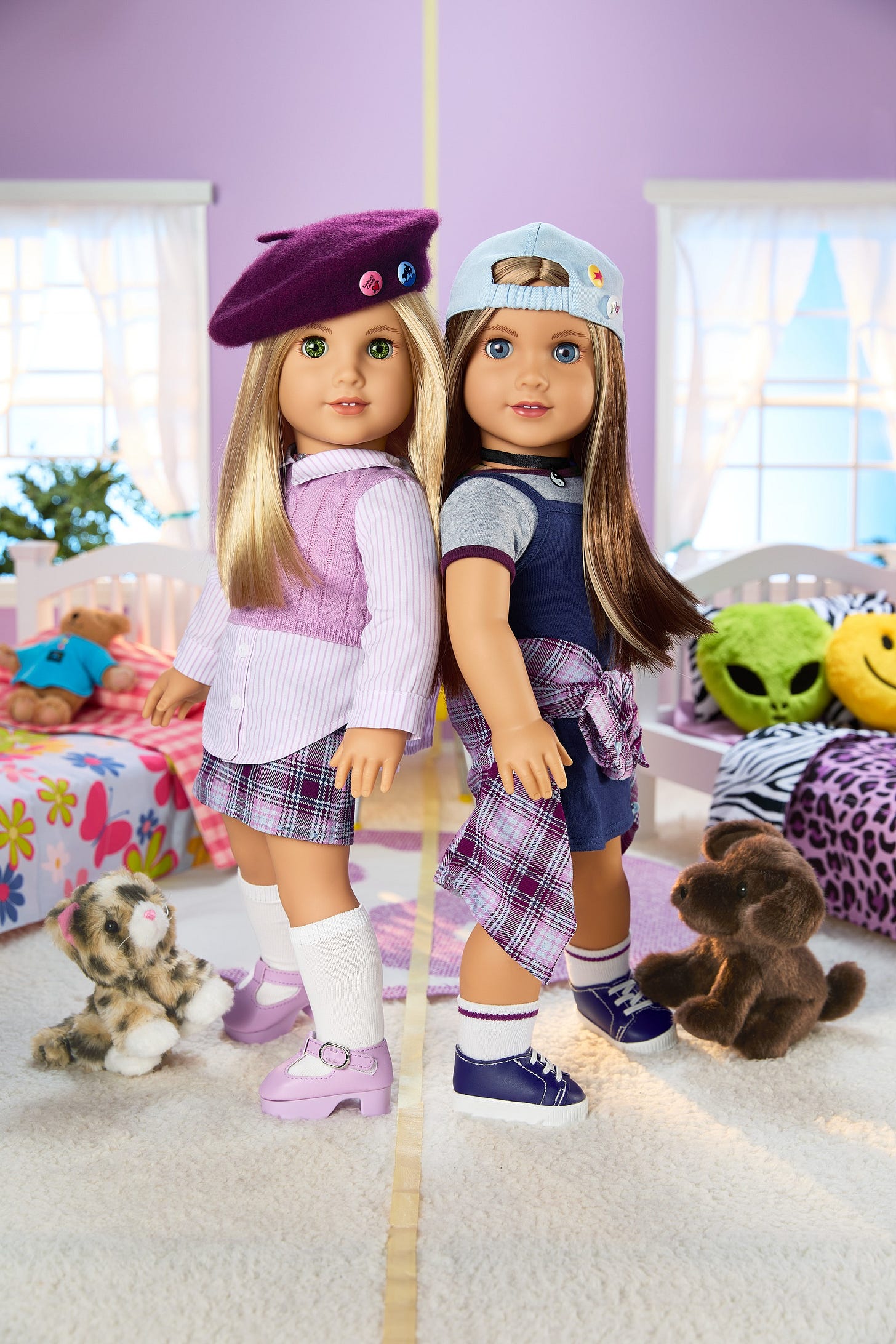
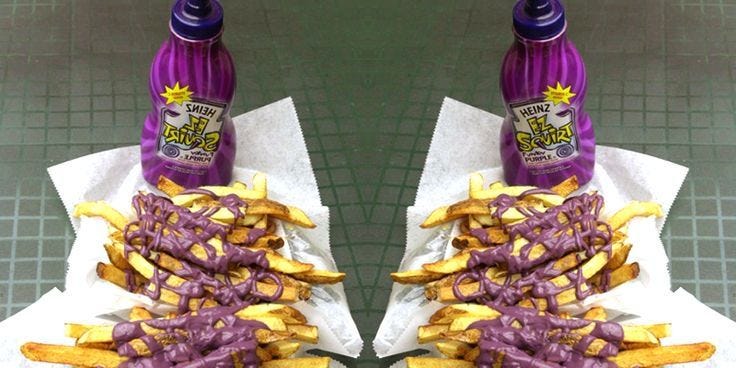
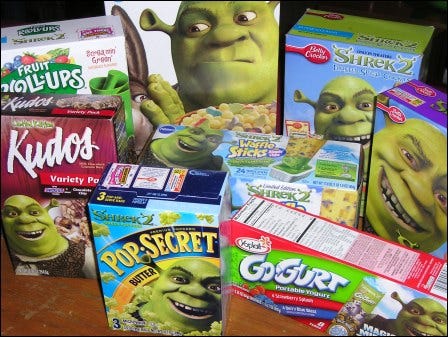
Looking at the micro-comic you basically outlined using an image generator, I'm thinking artists in the comic industry ought to be shitting their pants right now. If I can get Bing to draw the Batman story in my head, what the hell am I paying DC and Marvel for?
Also, about those living rooms: The second one is definitely closer to my memories from the 80s. All it needs is the smell of stale cigarette smoke caked into the upholstery. The first picture is some Saved by the Bell bullshit.
I can't believe you'd slice off the juiciest part of the article and put it in another piece. Monster! Now I have to wait ~a week to see how it ends.
I will say, however, that your recent series all looking at American consumer/pop culture (and another article which I just can't remember the name of) has really brought to the fore my mind how interconnected mass-market consumerism and the Progressive ideological aqua regia really is. Does one exist without the other? Can one exist without the other? I feel like there's a rich vein of thought to tap here, either as regards the historical roots of both Progs and the modern economy (which both seem to be strangely connected to English Dissenters and their fellow-travelers) or how it manifests today
>Zoomers are convinced that the late 90’s and early Oughts were this bastion of wholesomeness, homeliness, and comfort
Don't get me started on that one